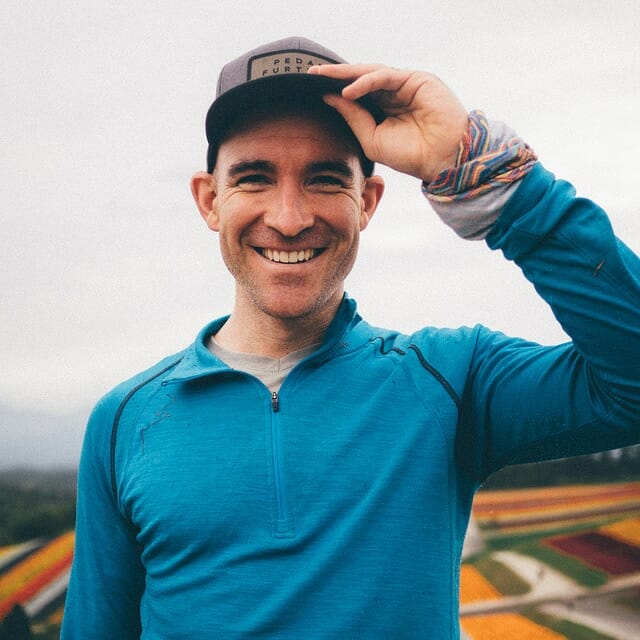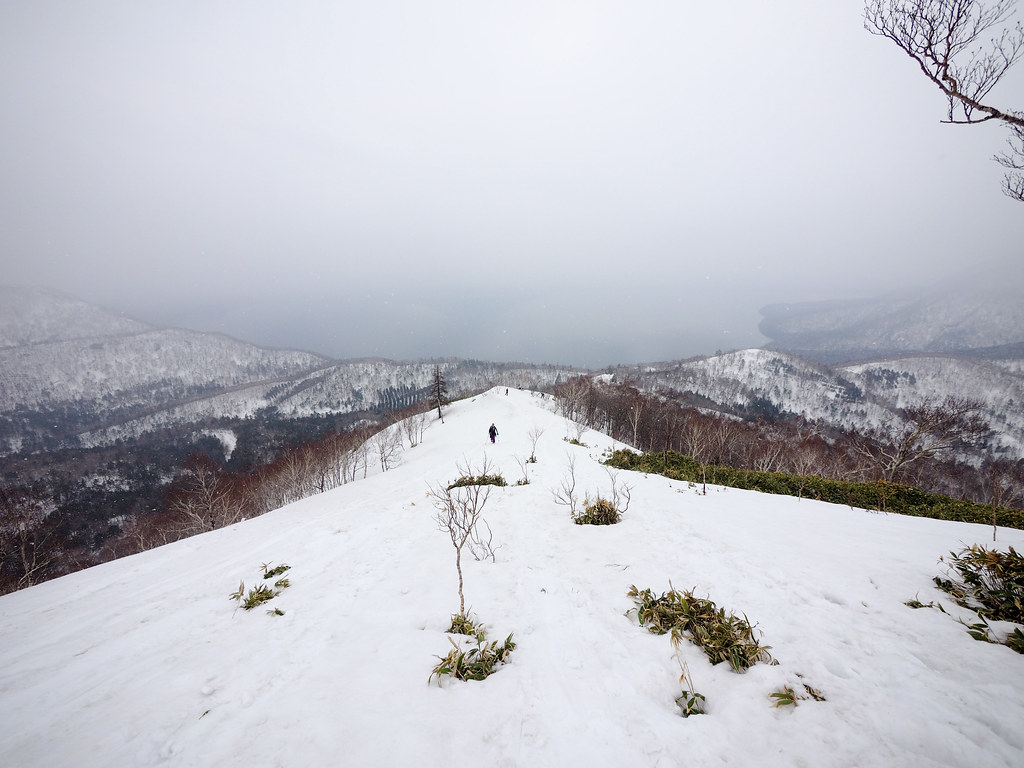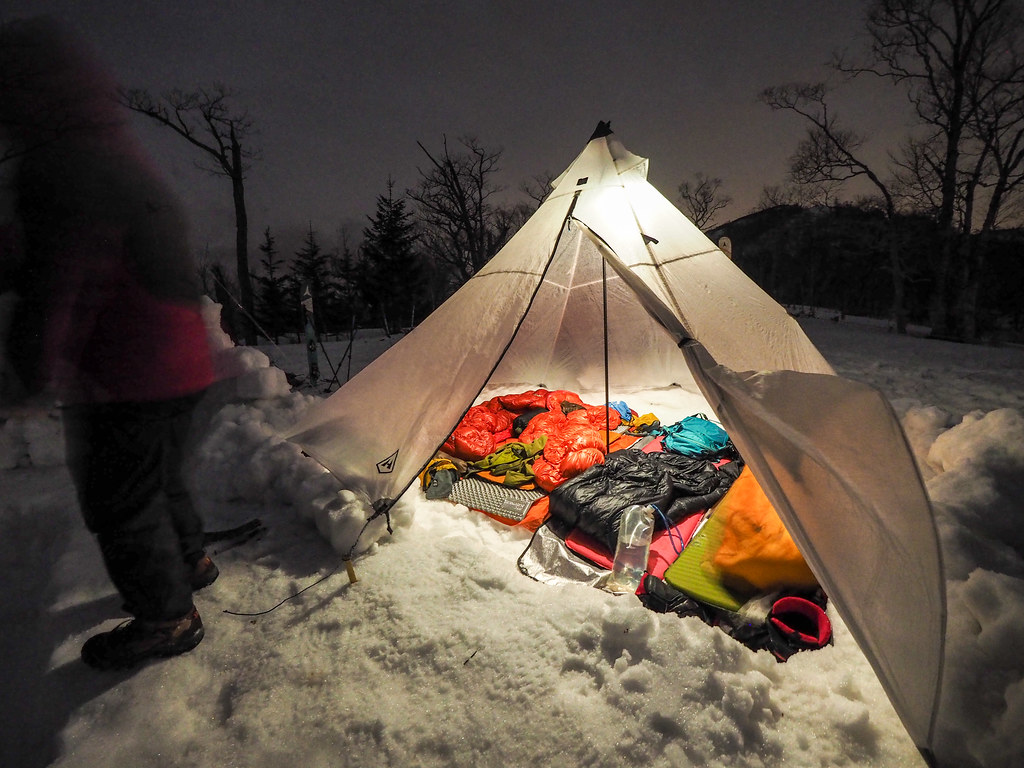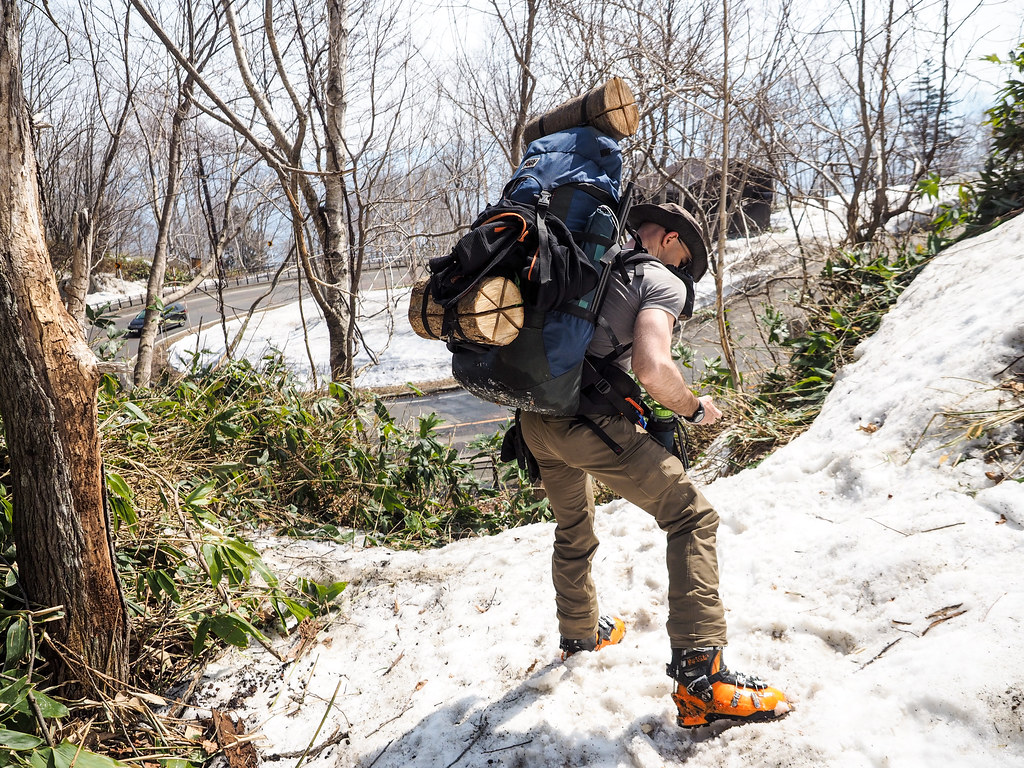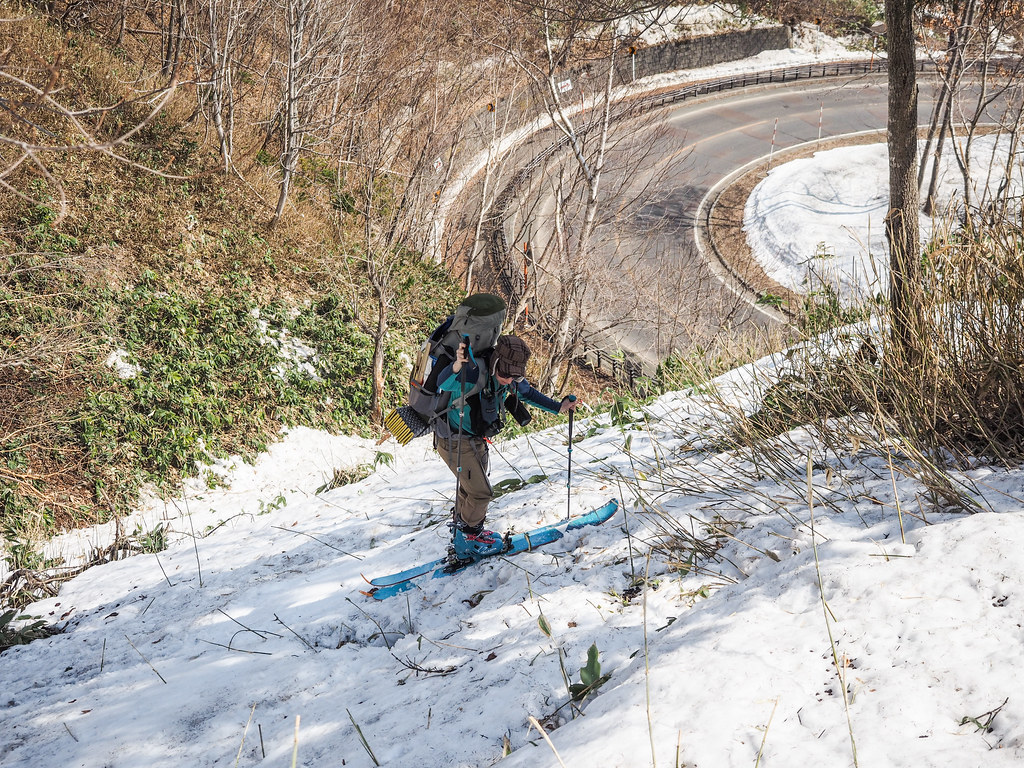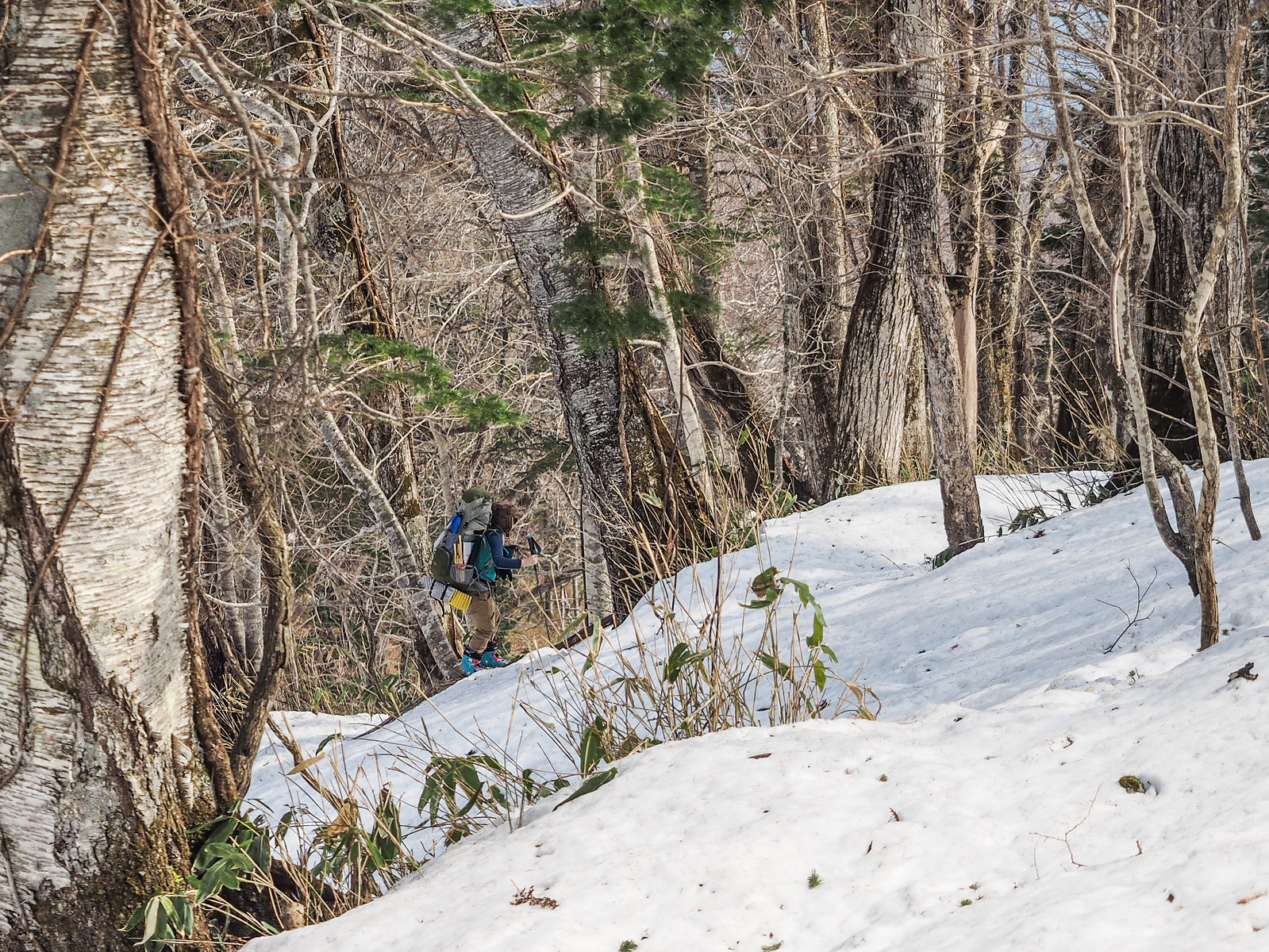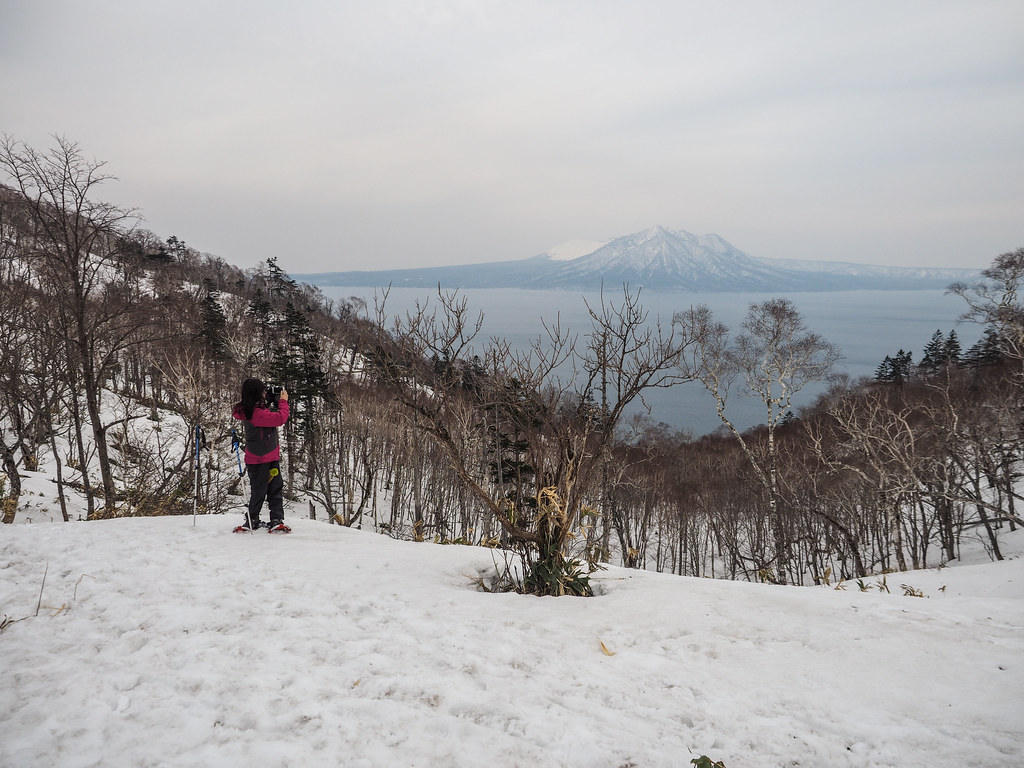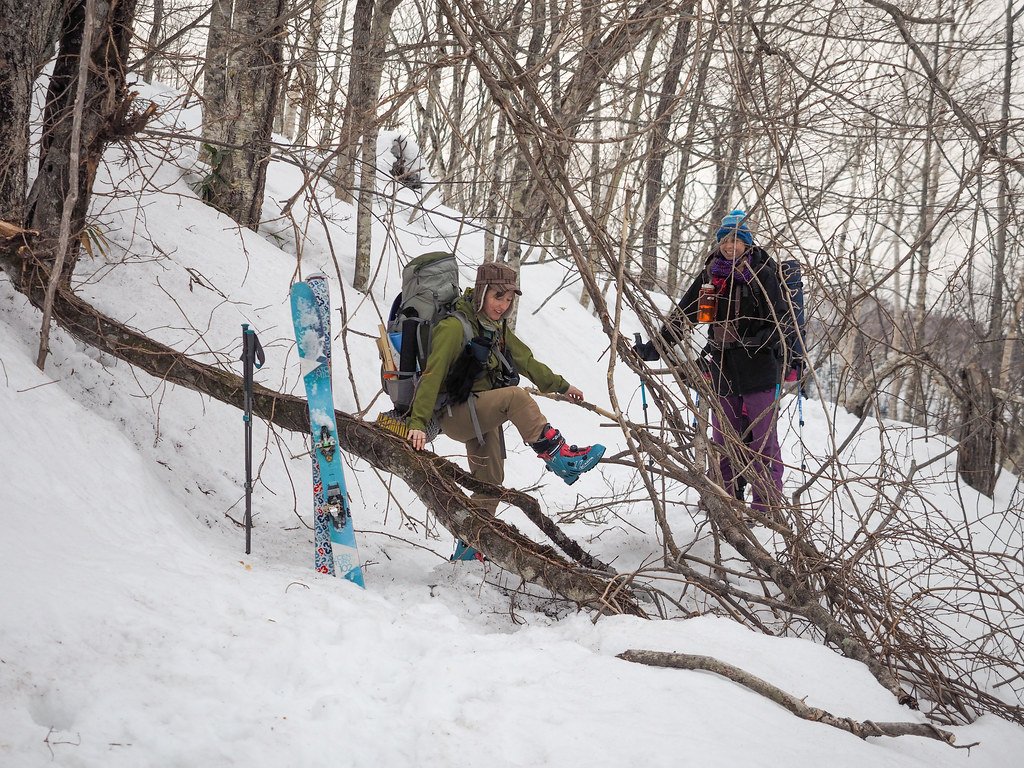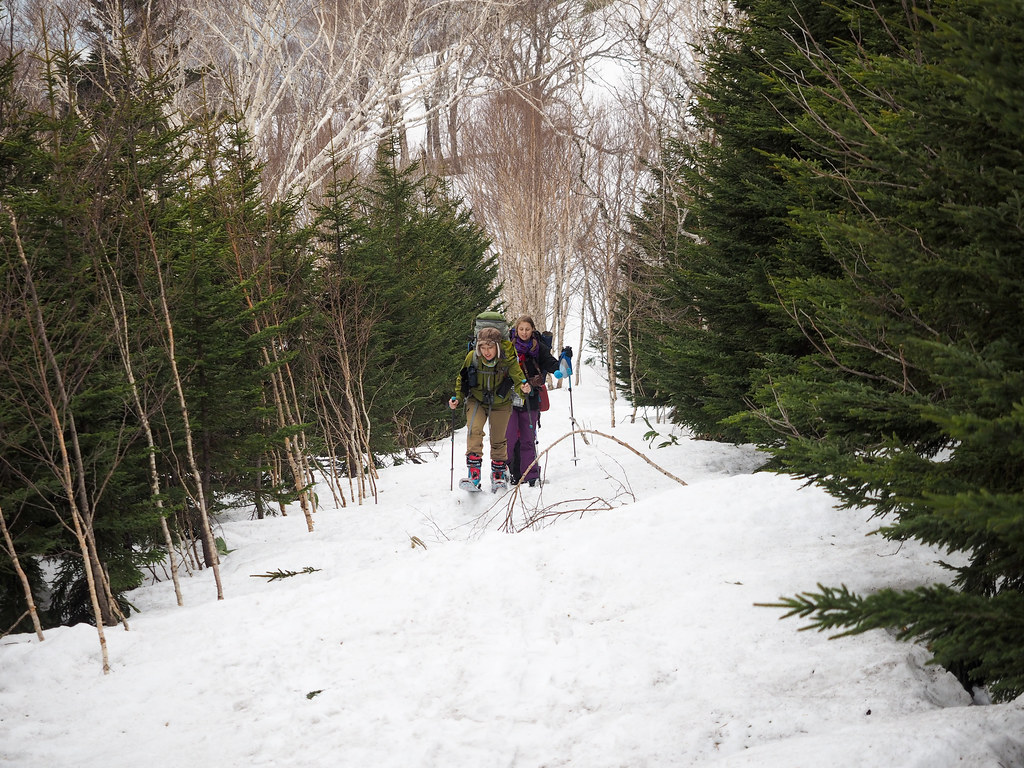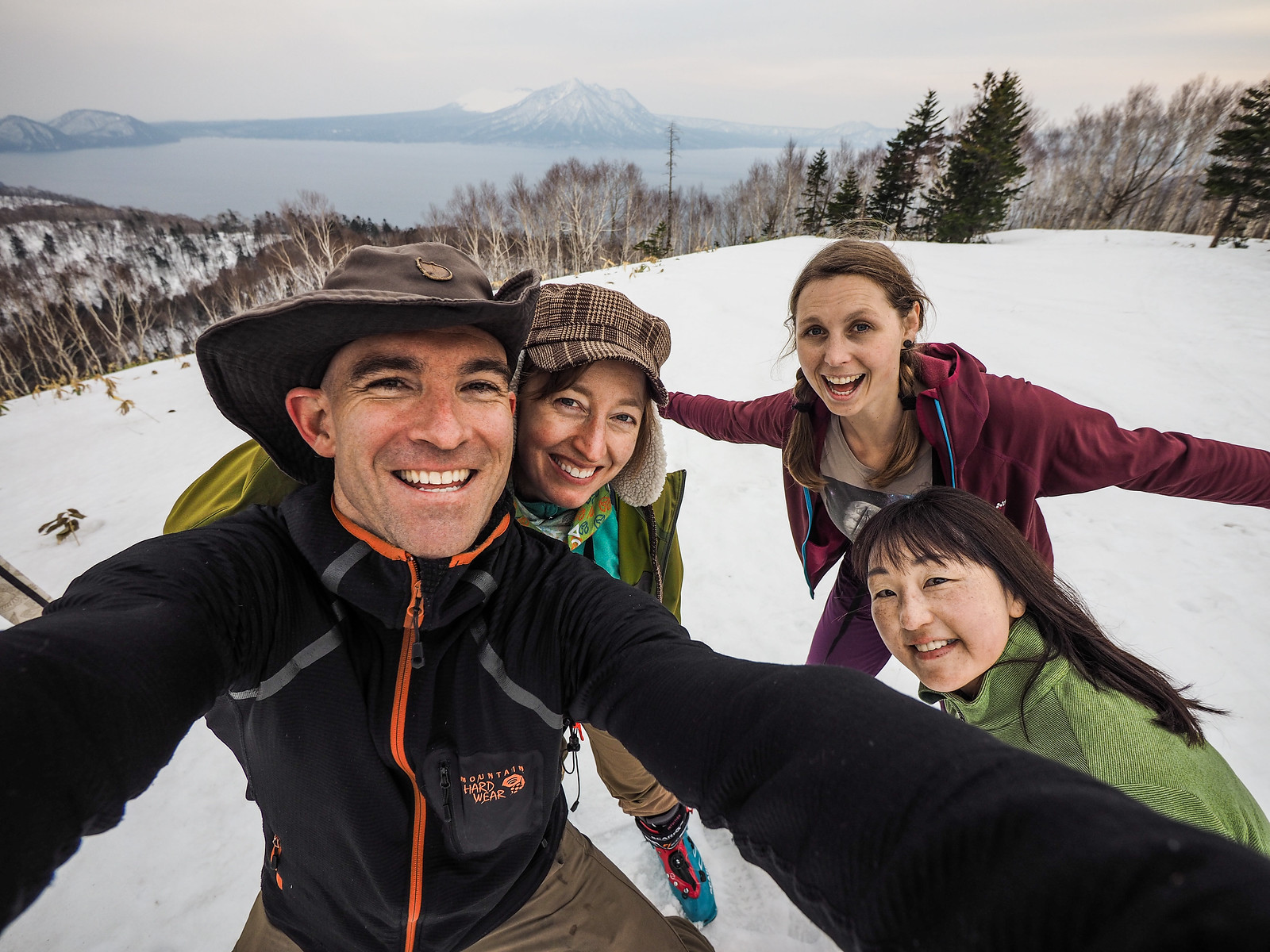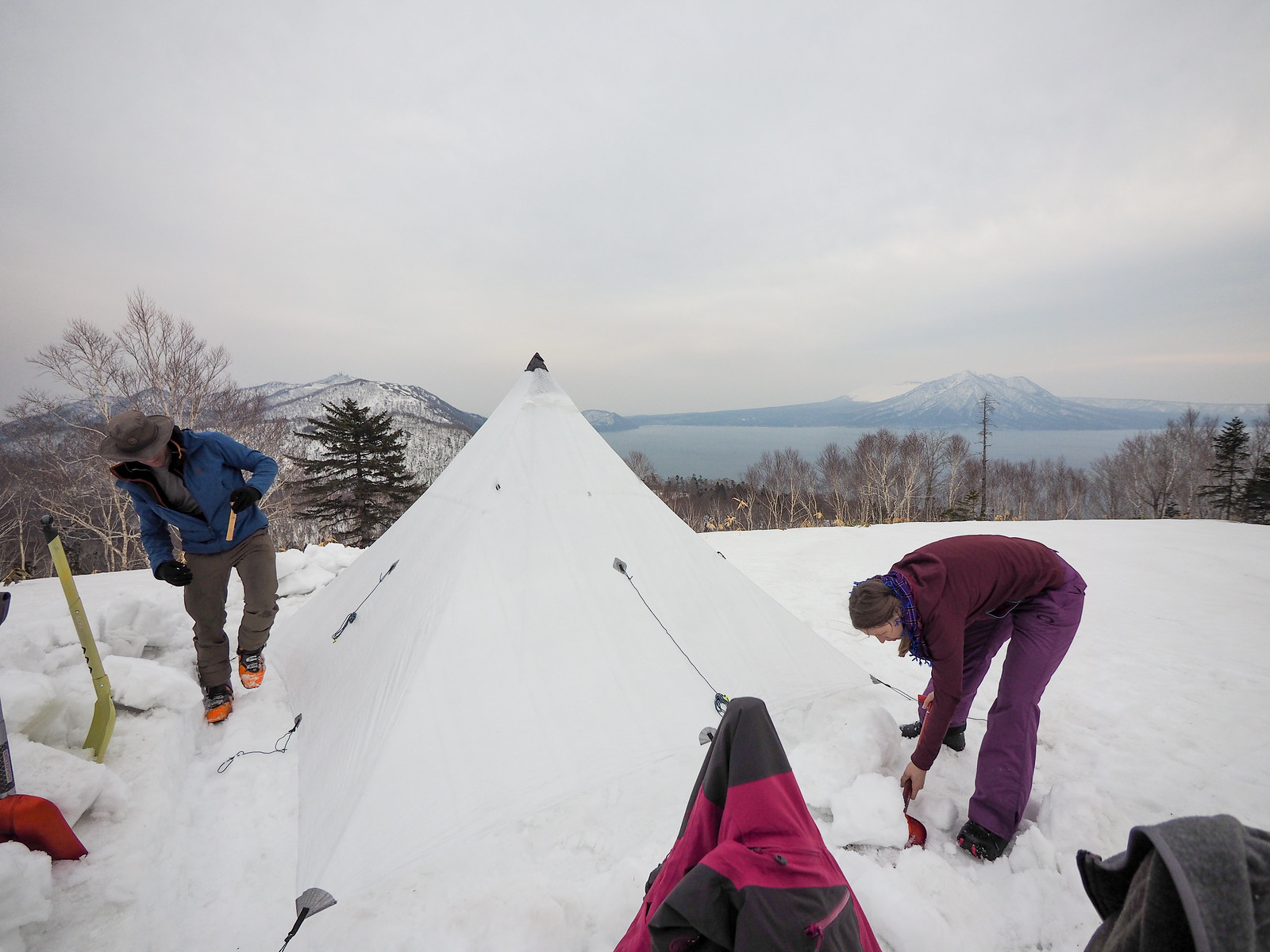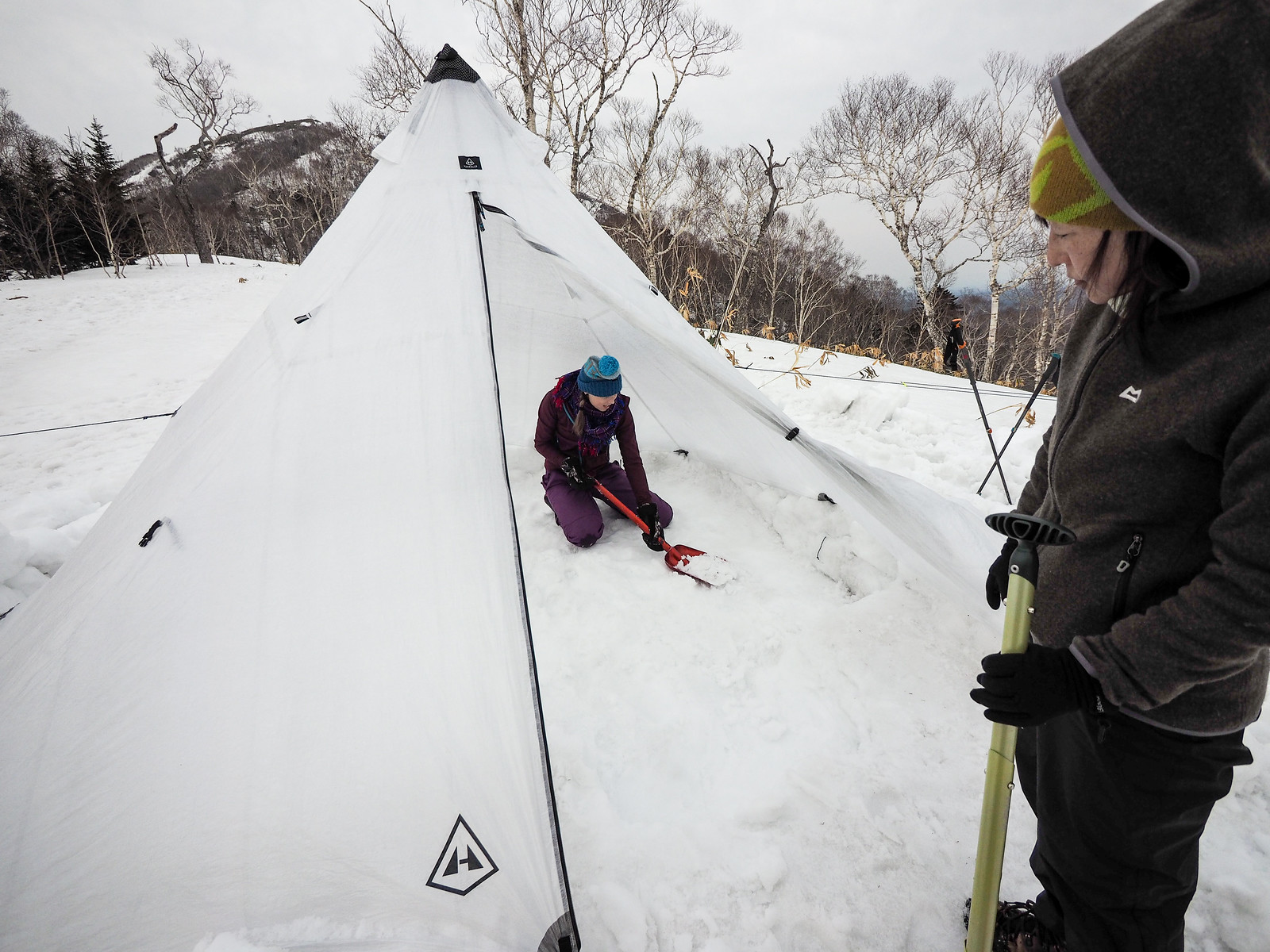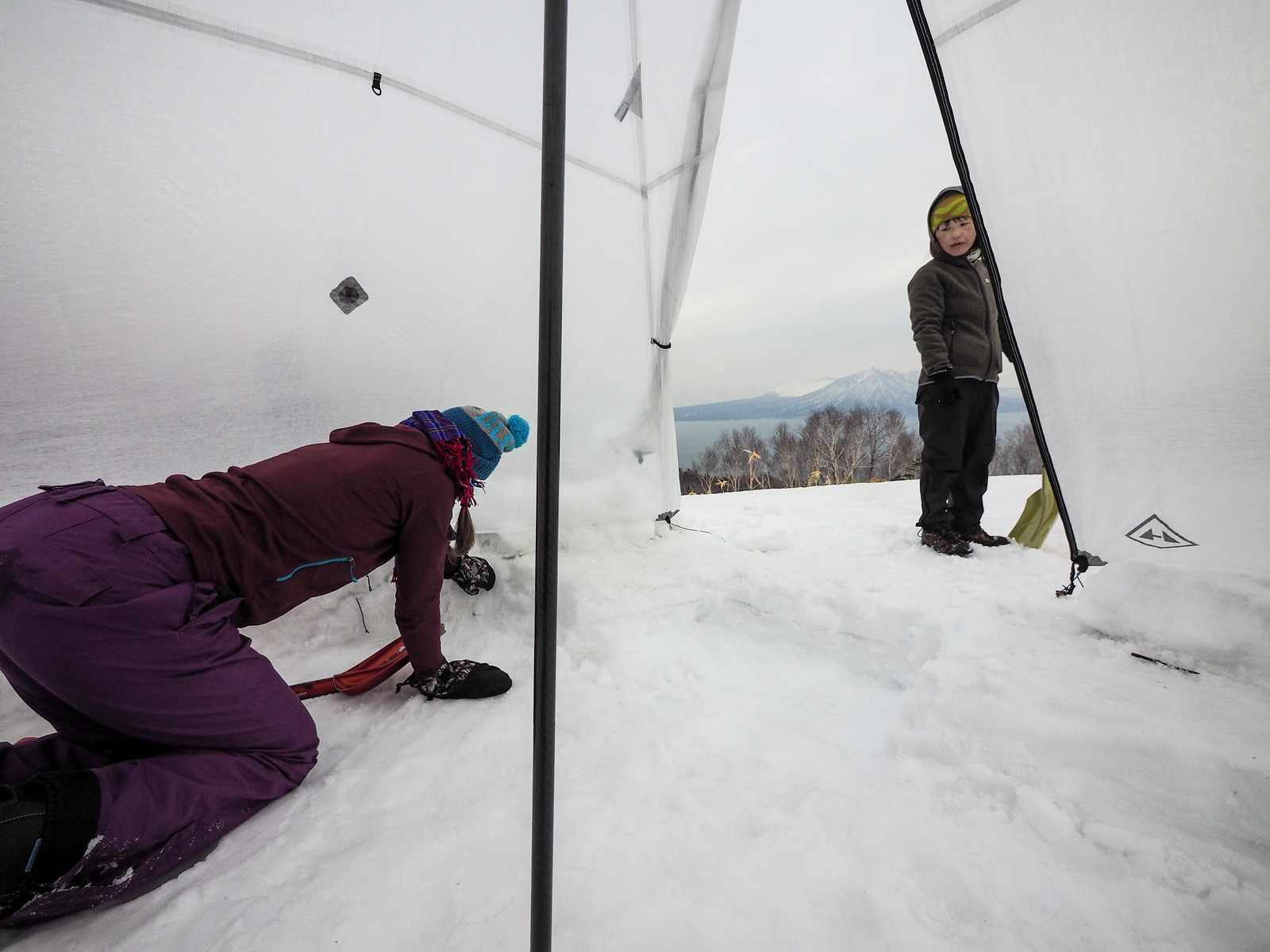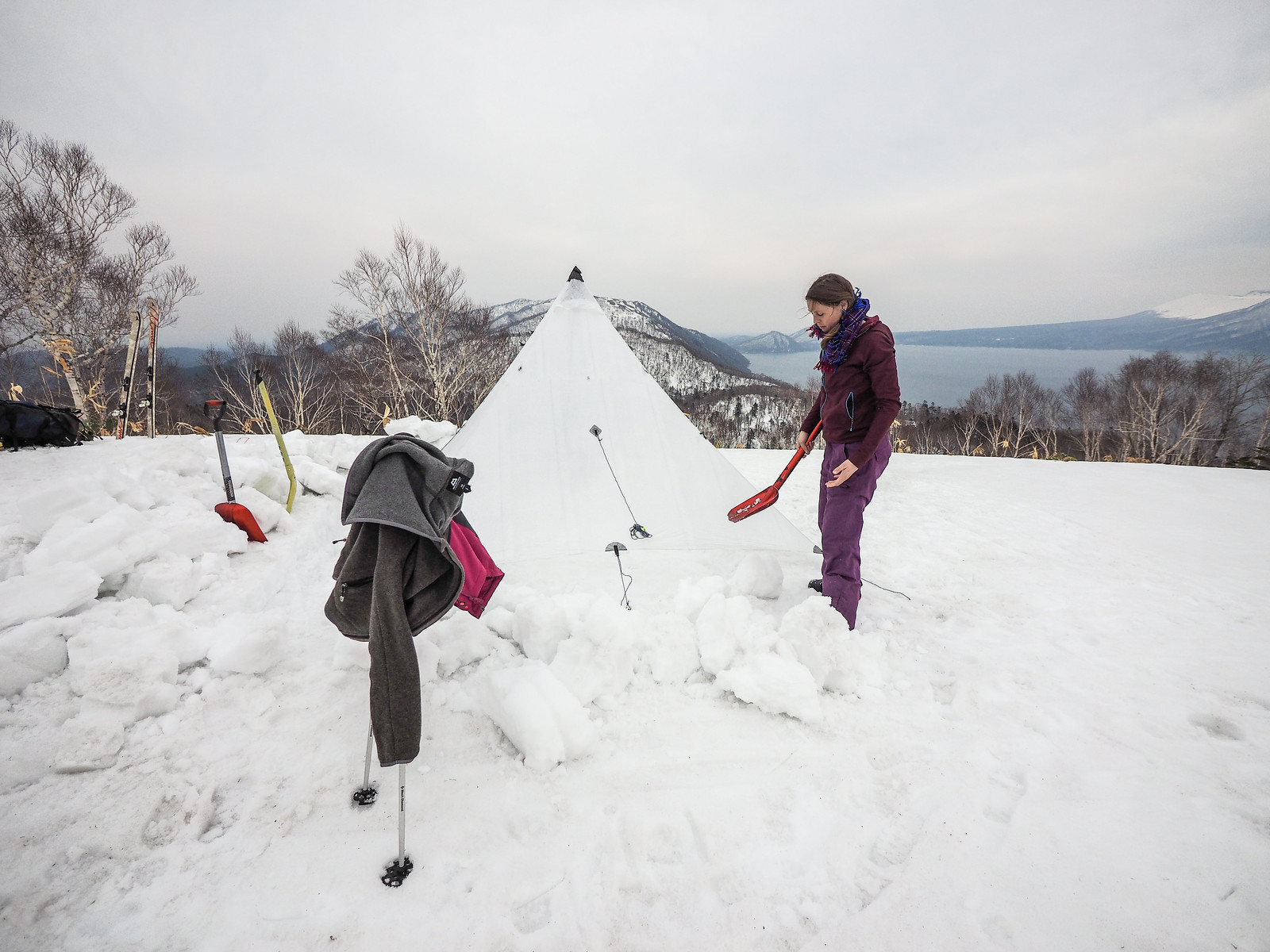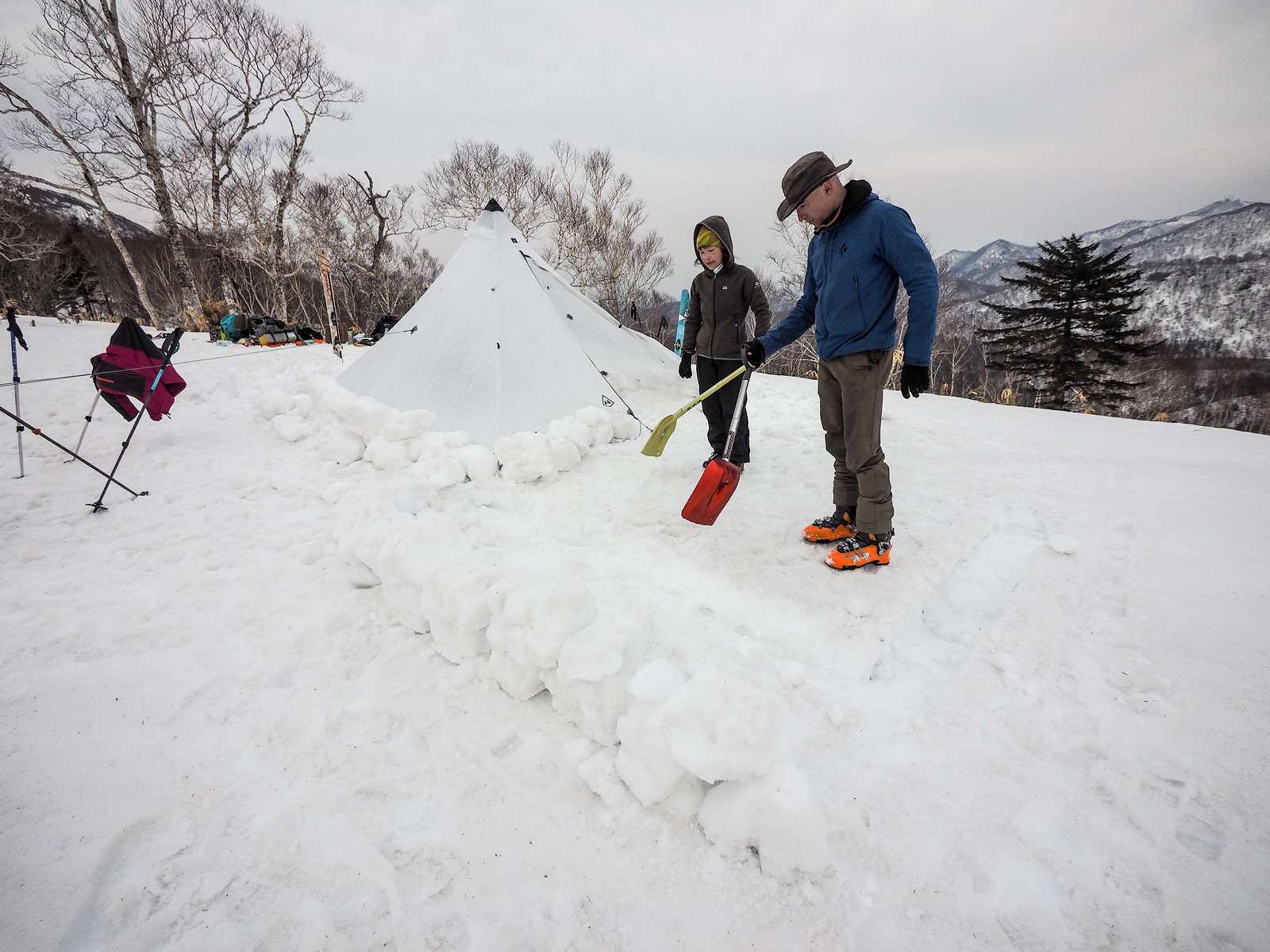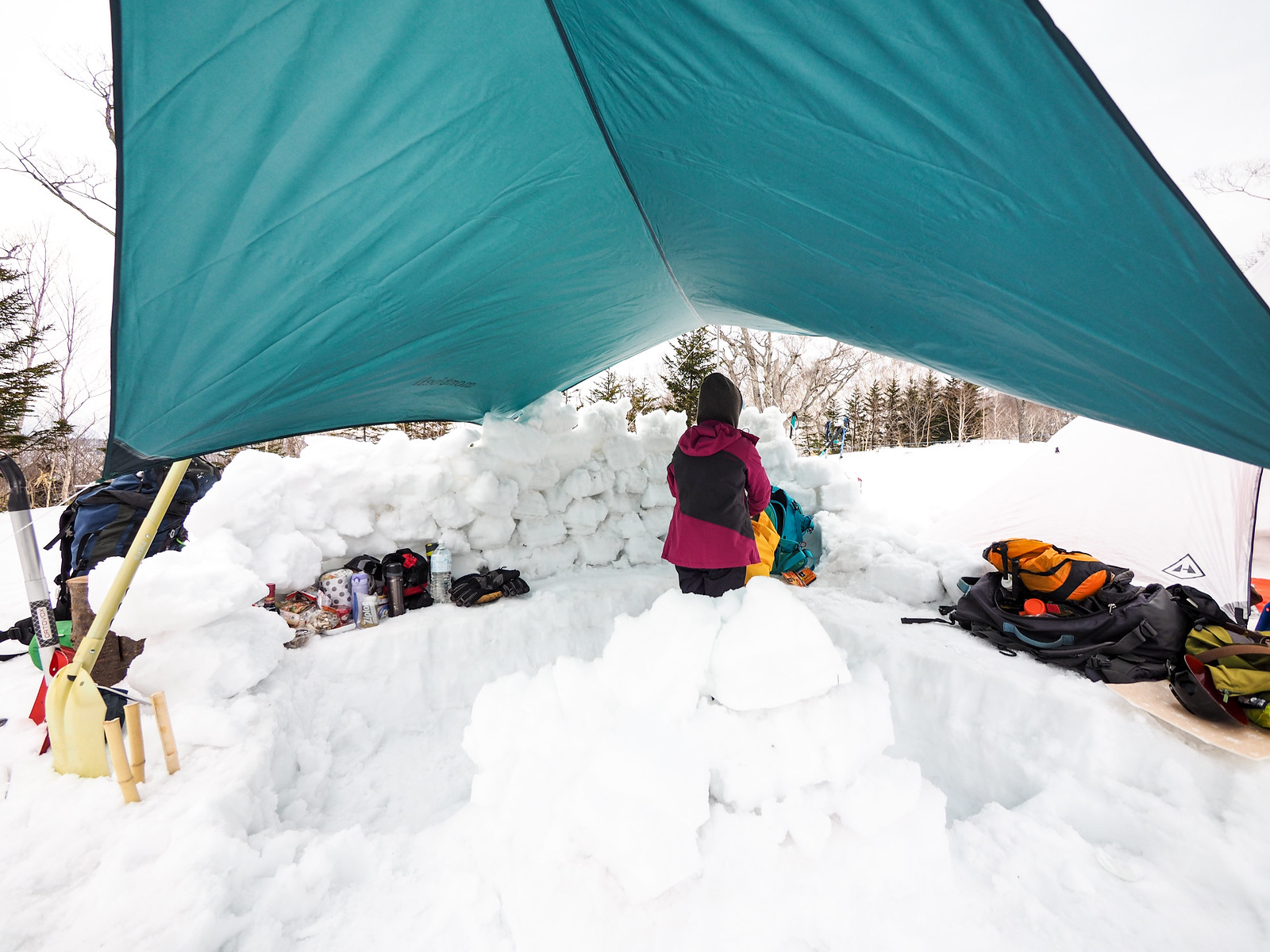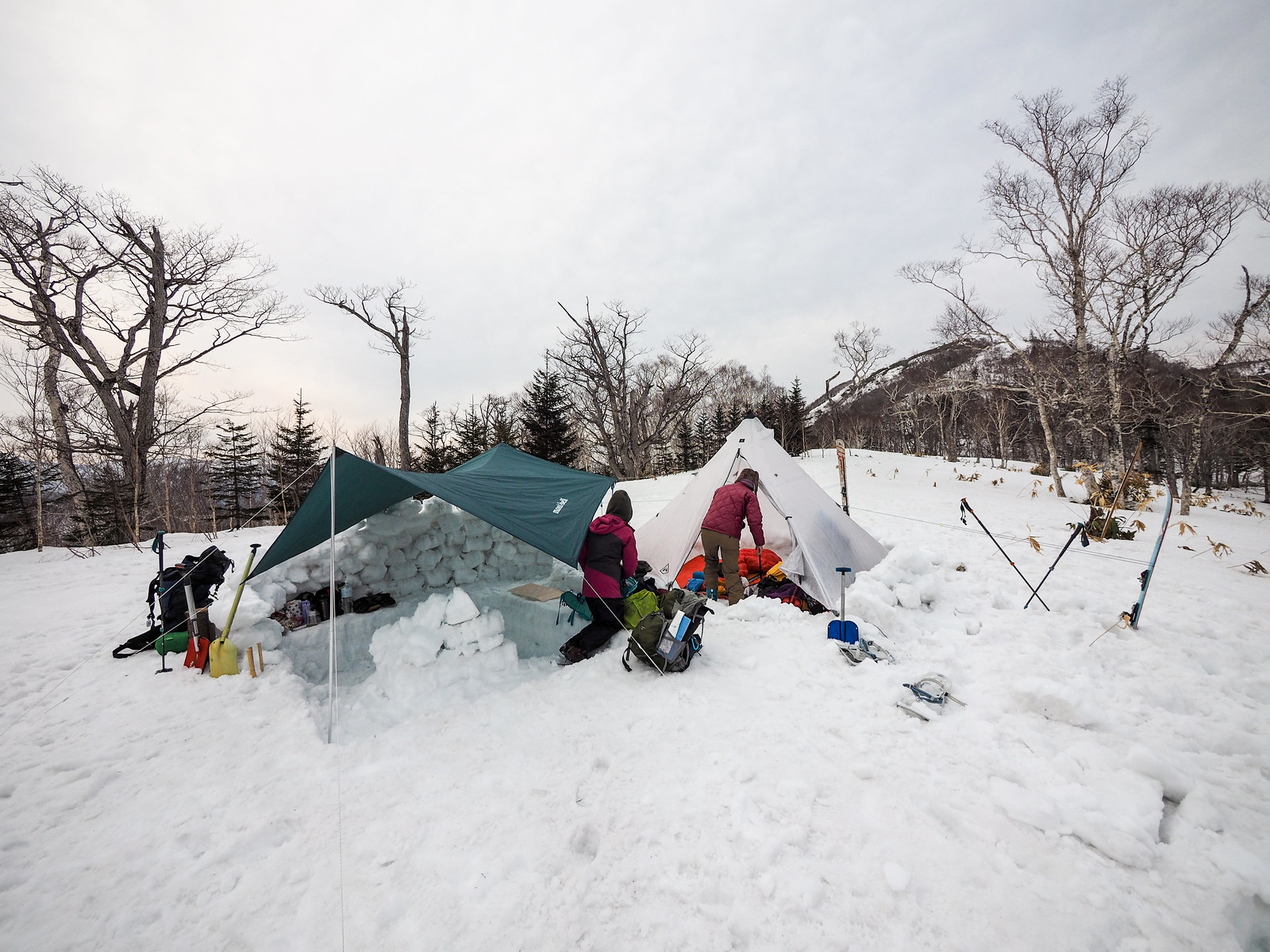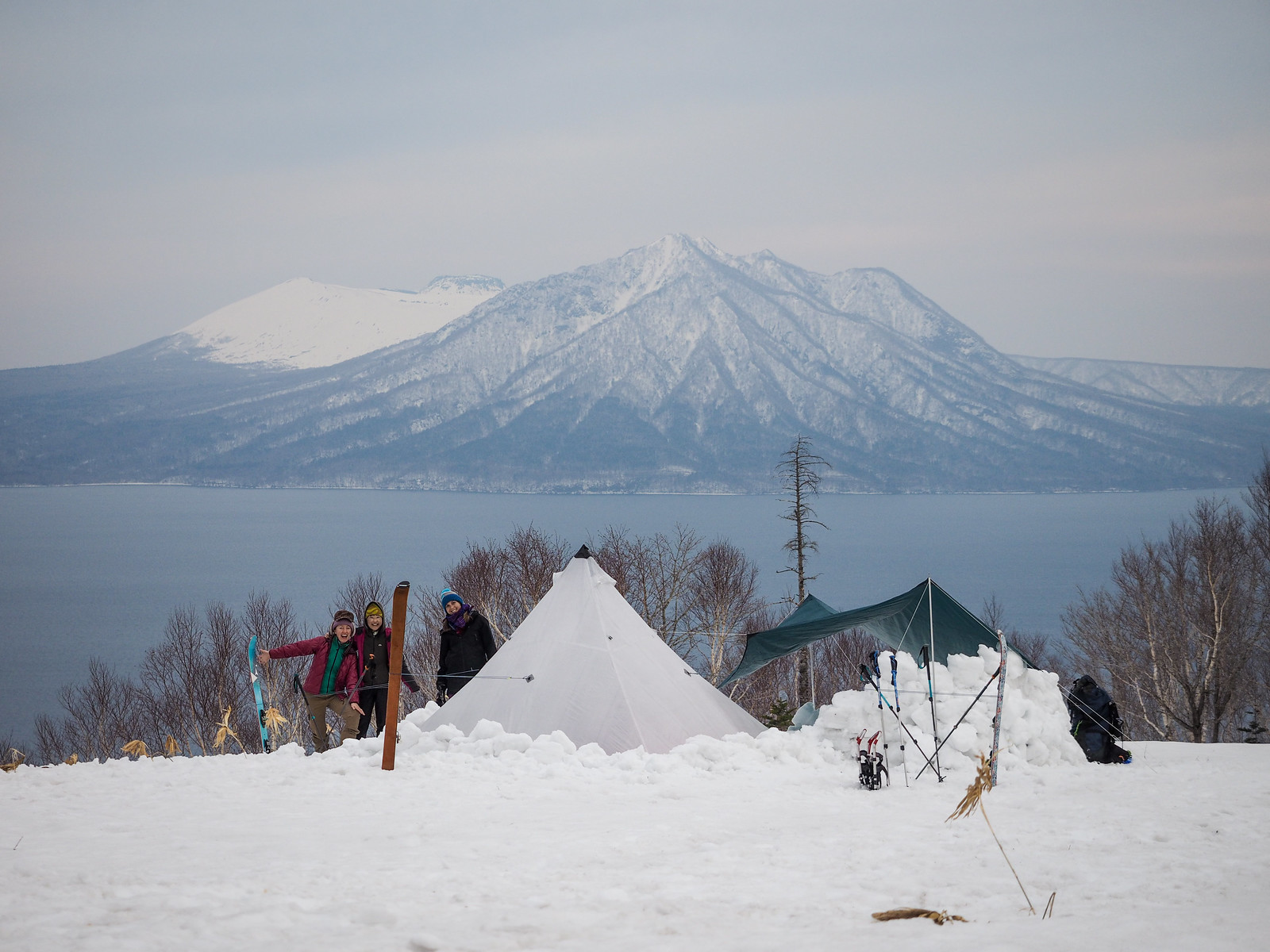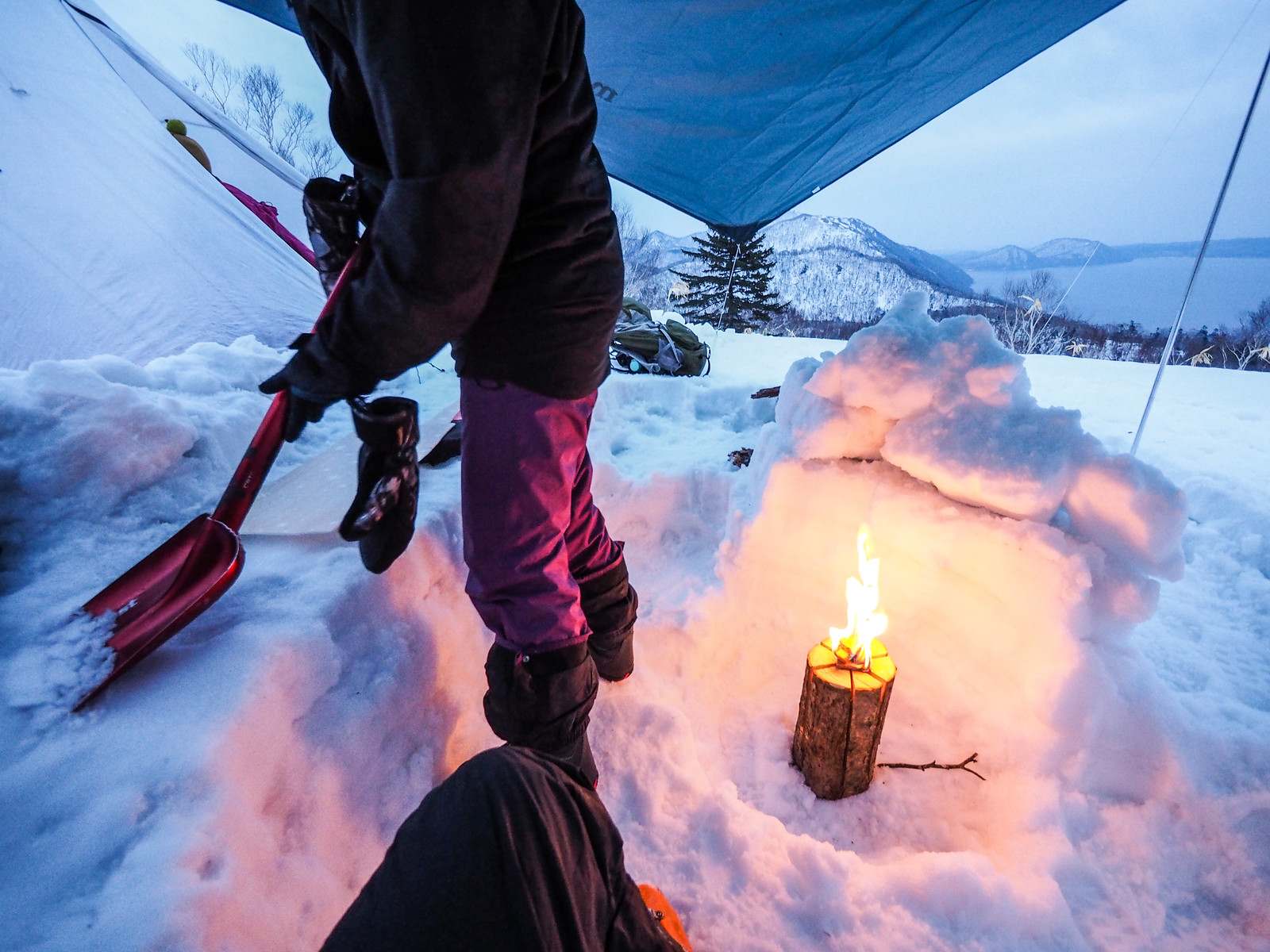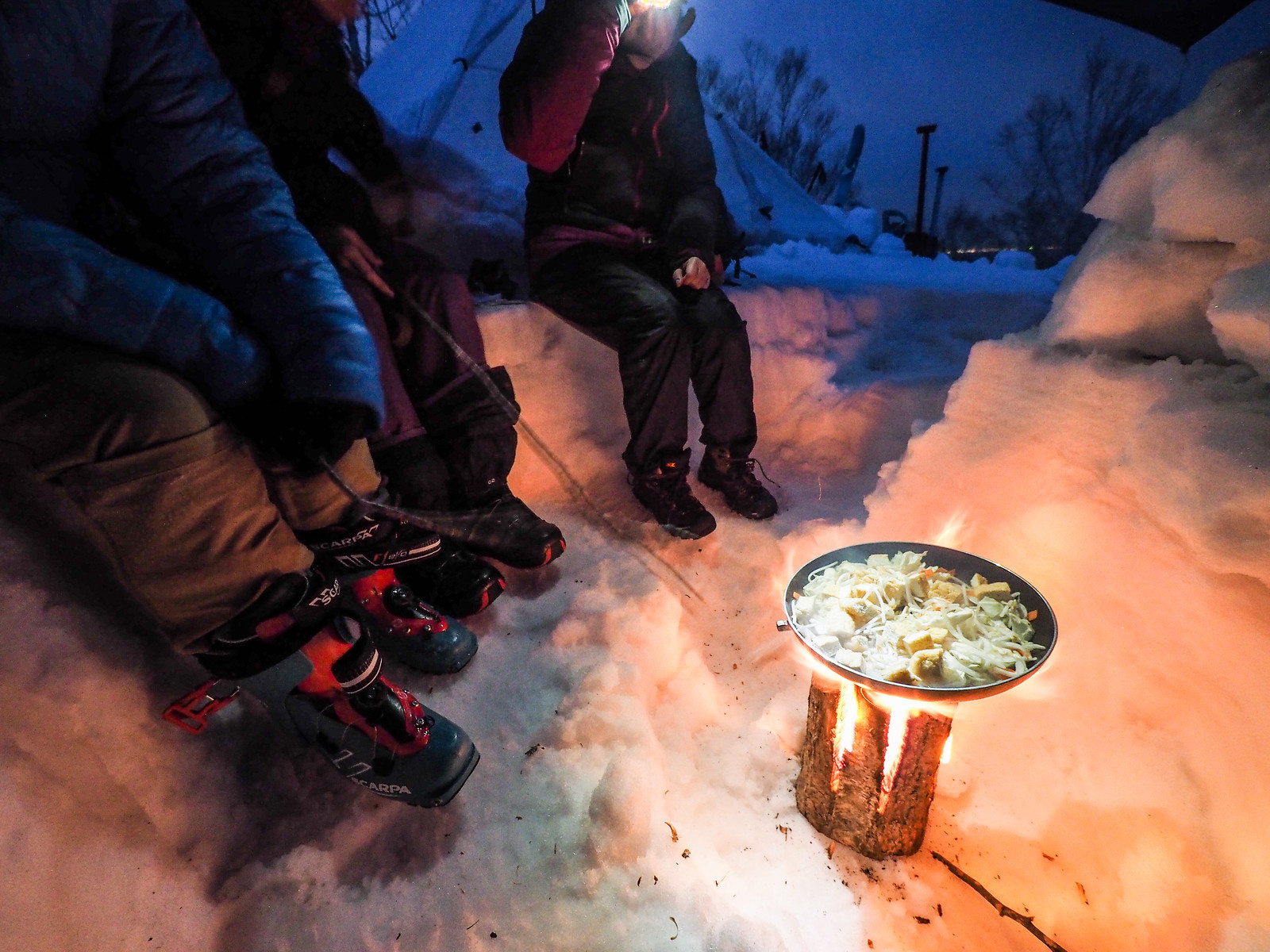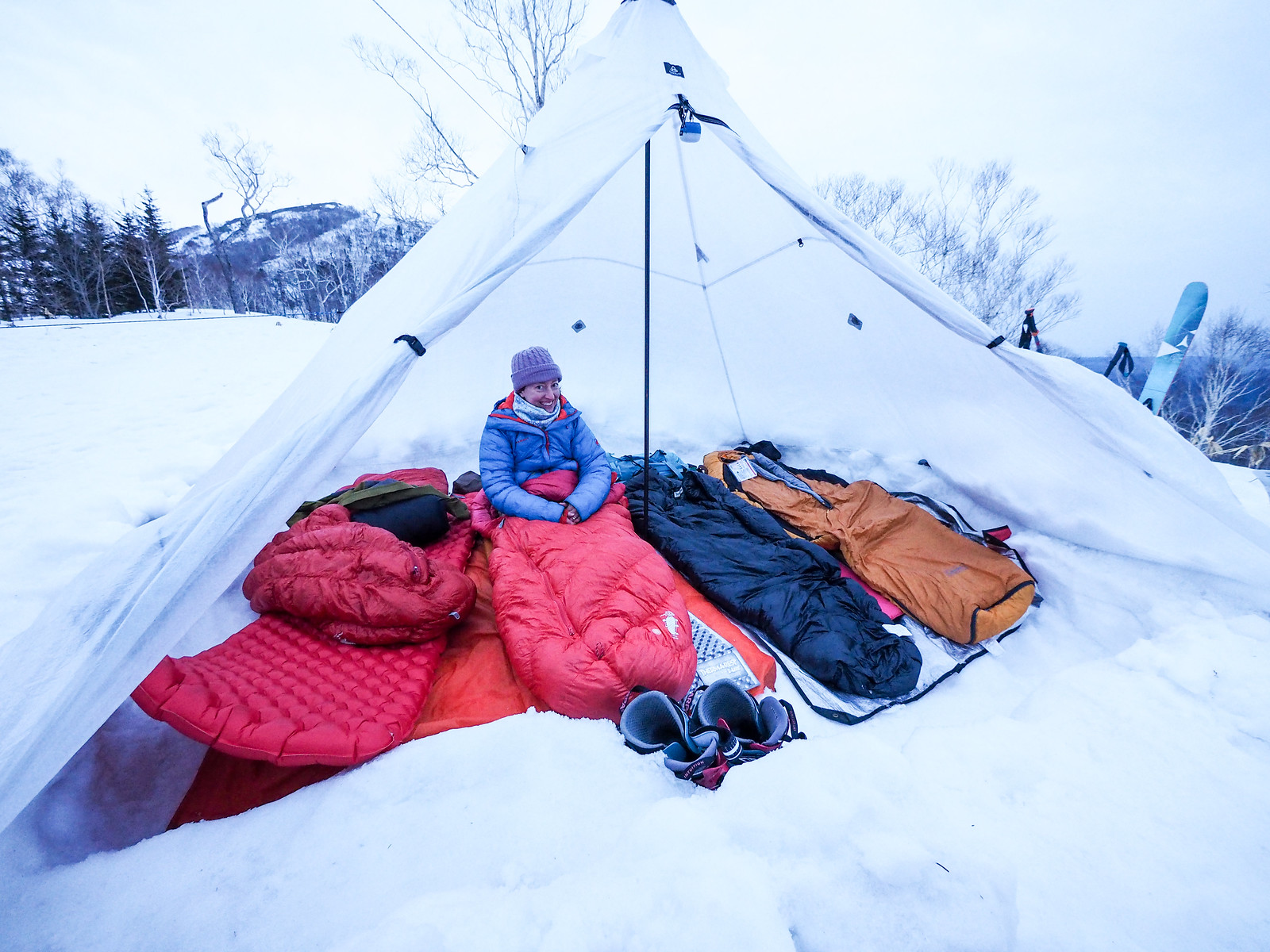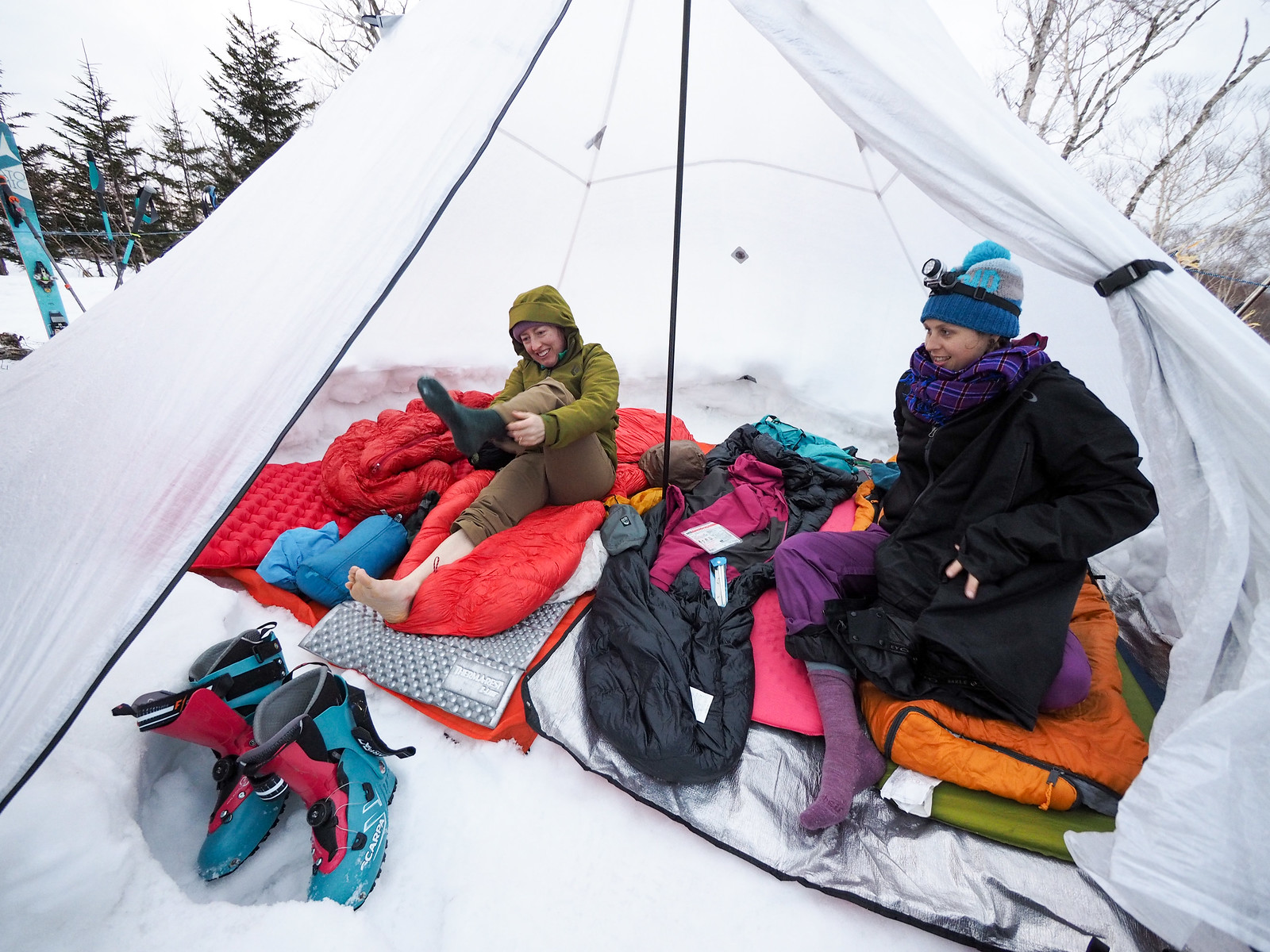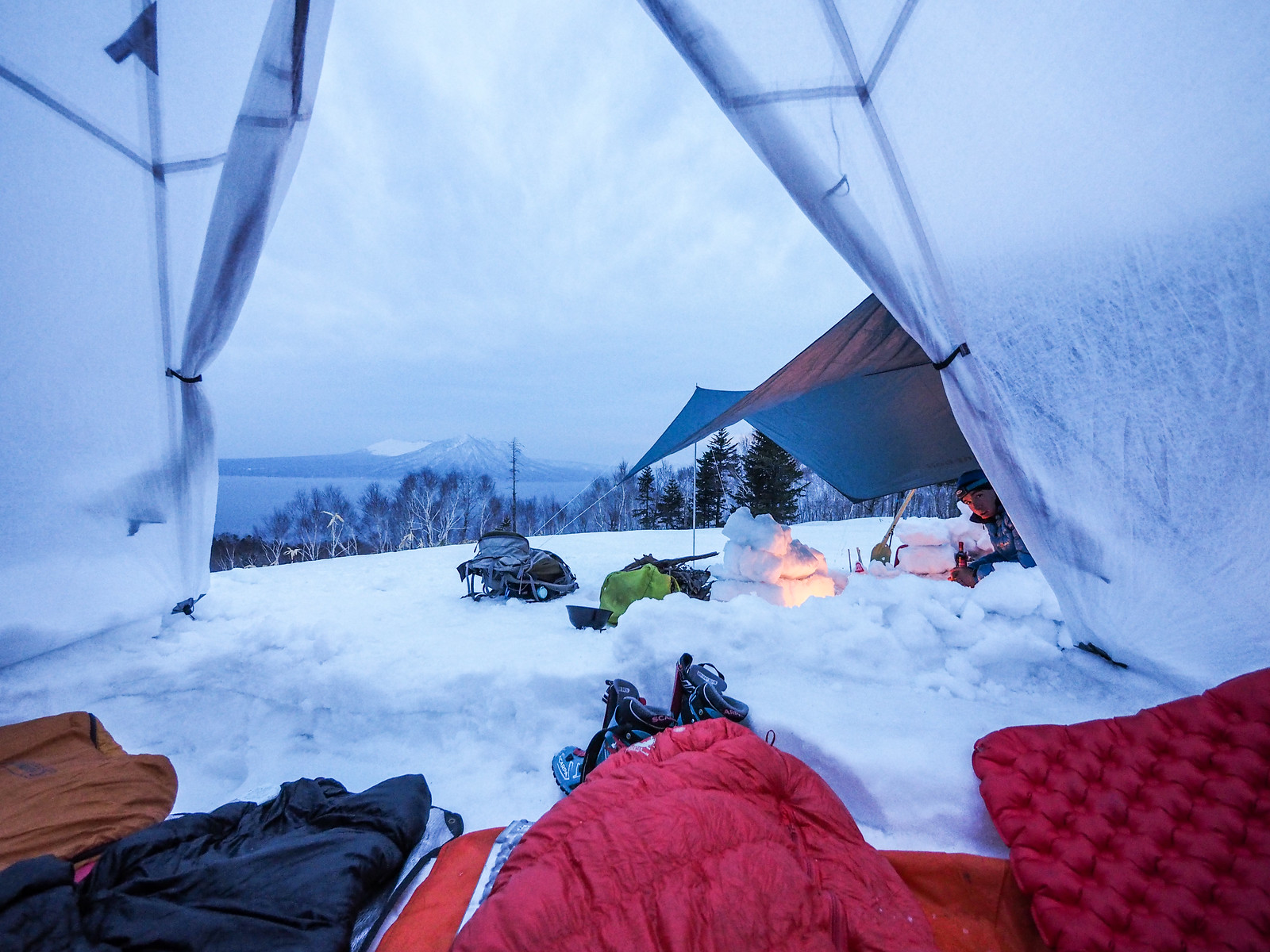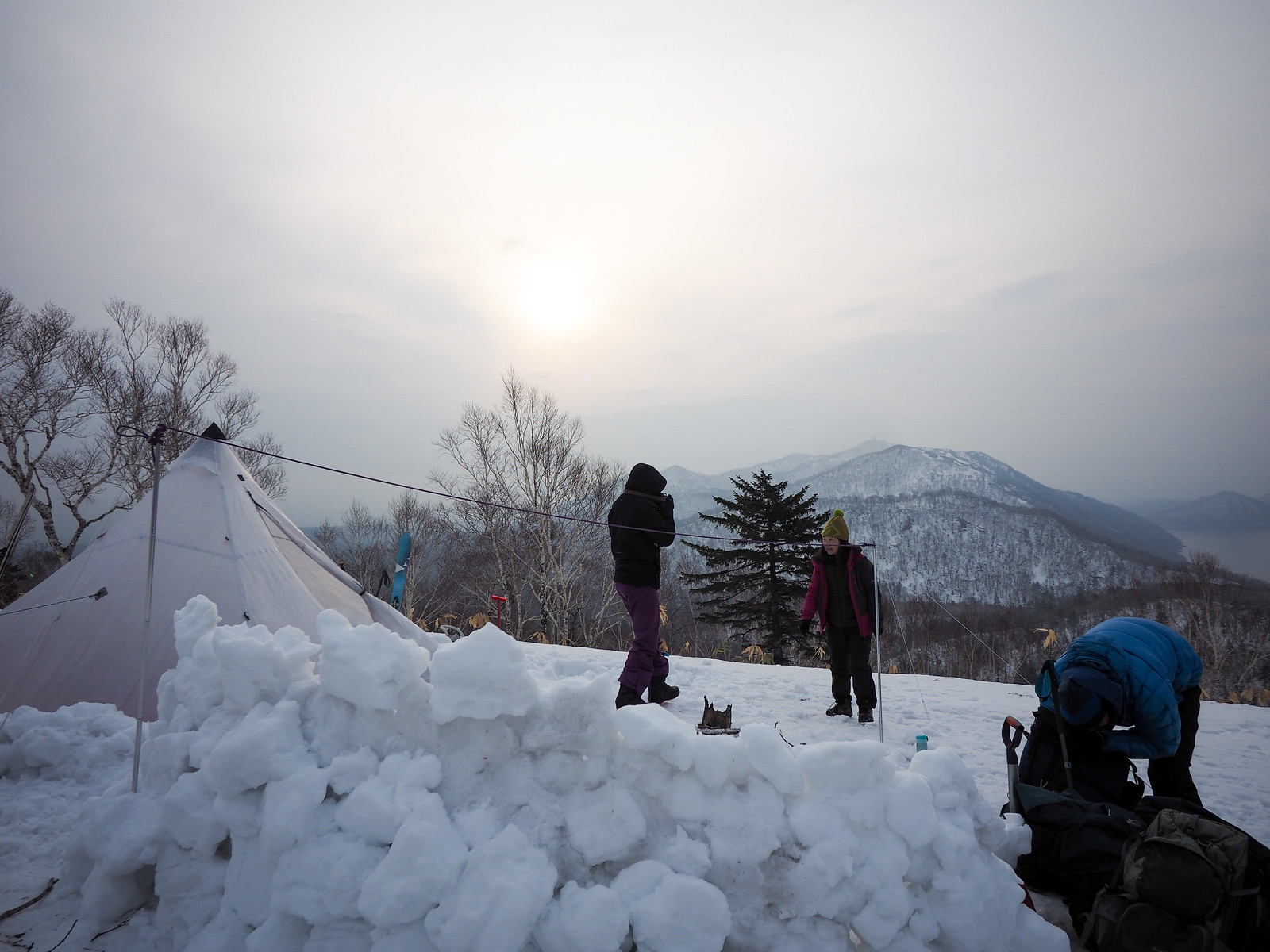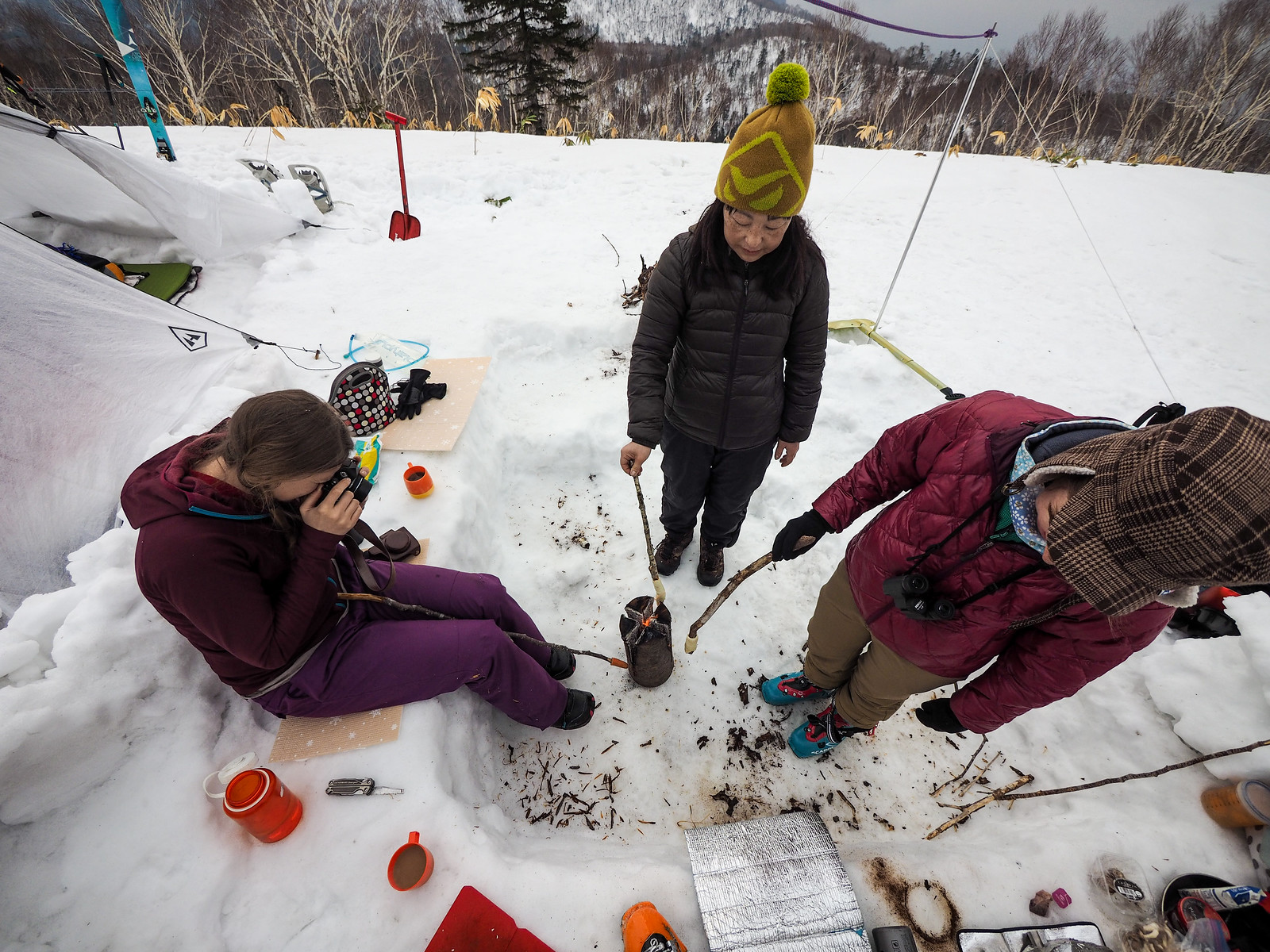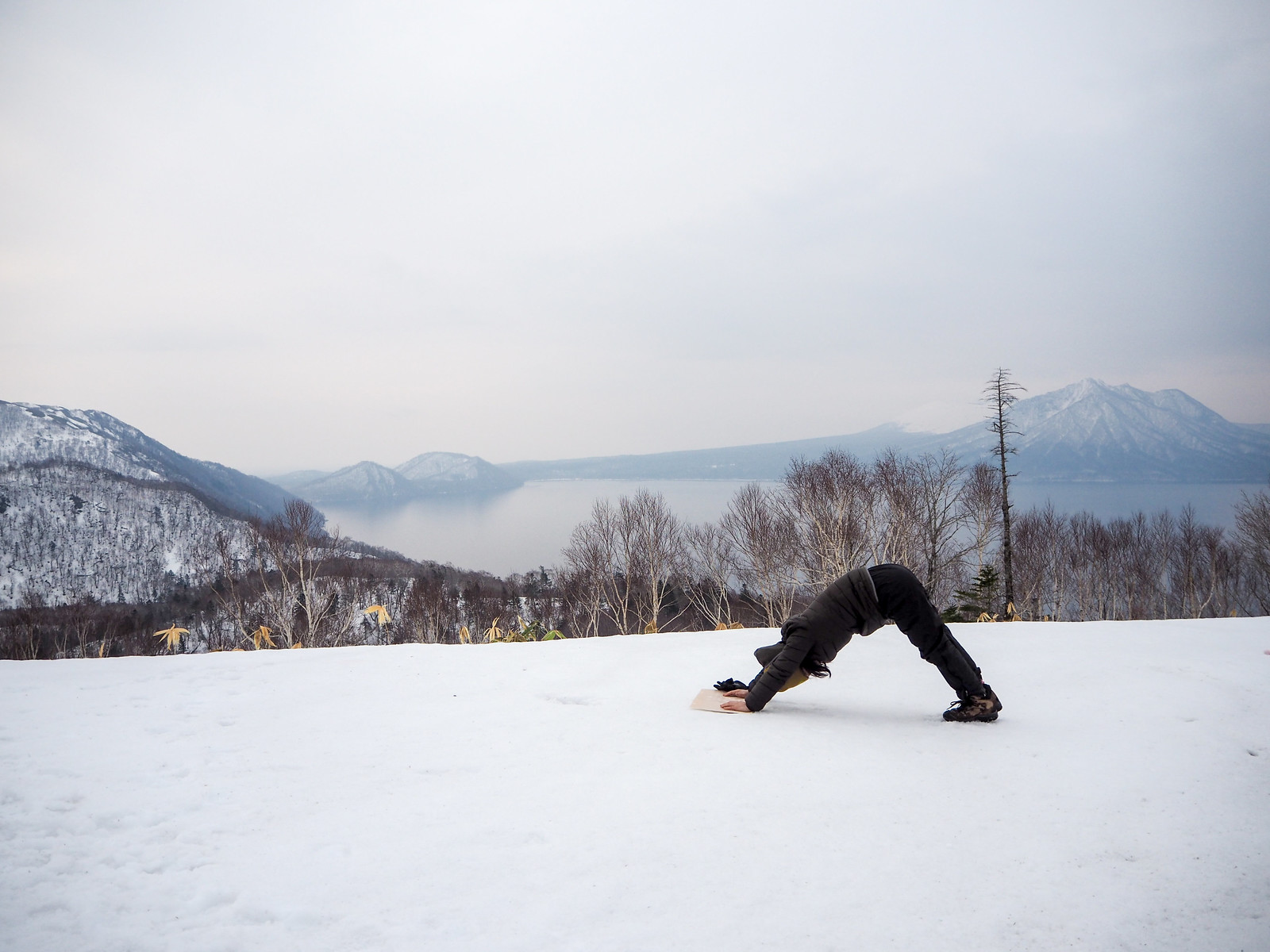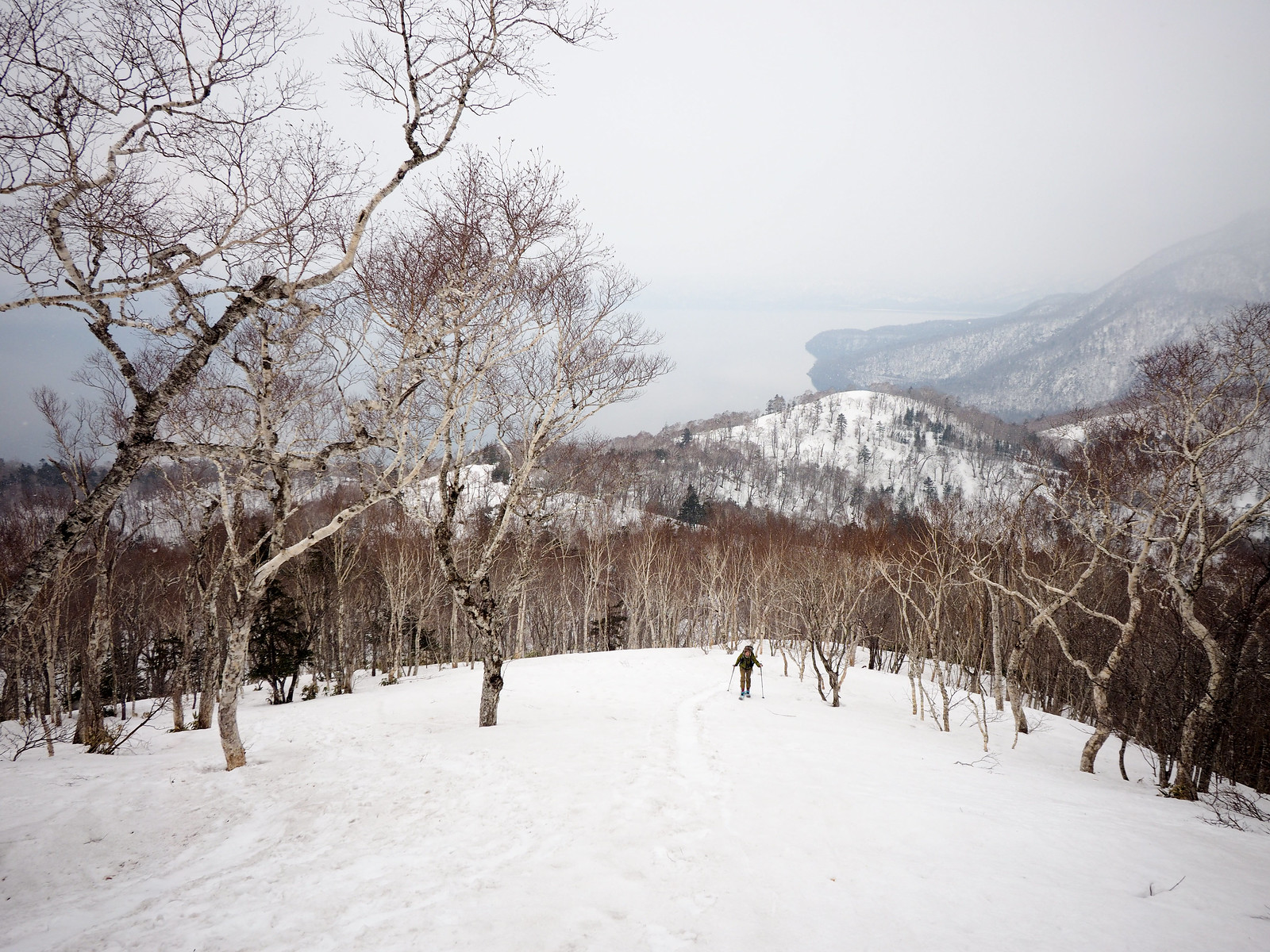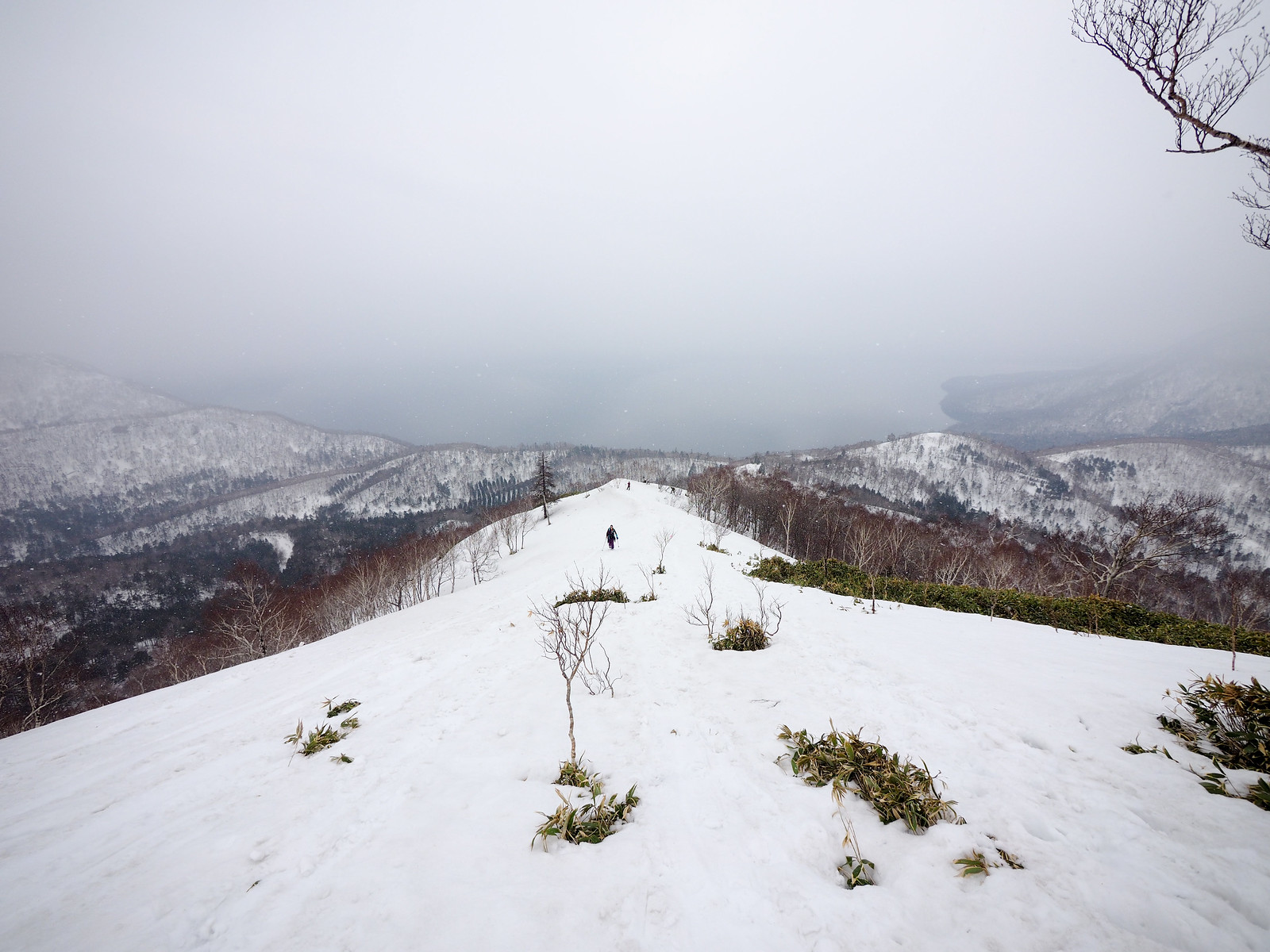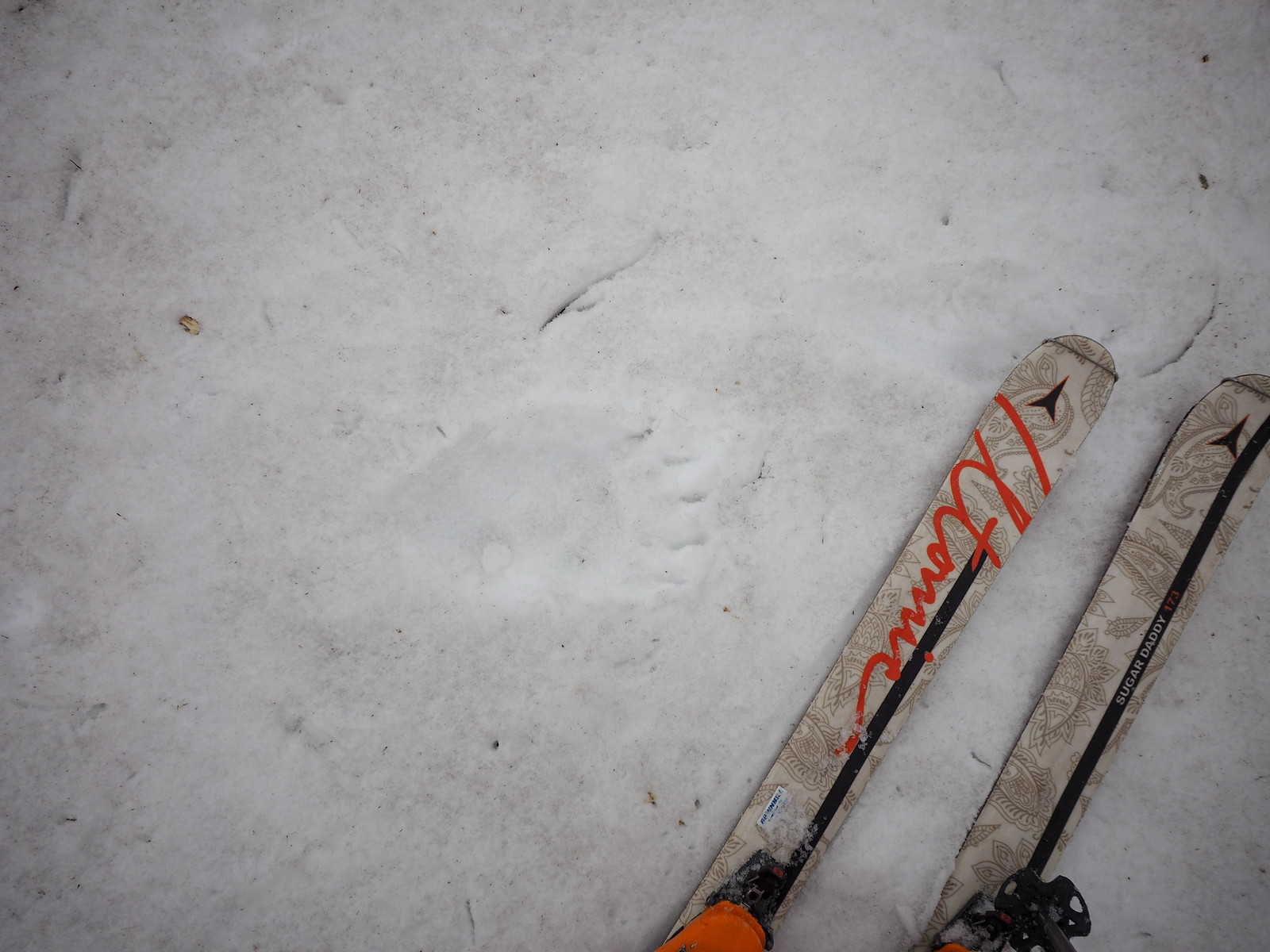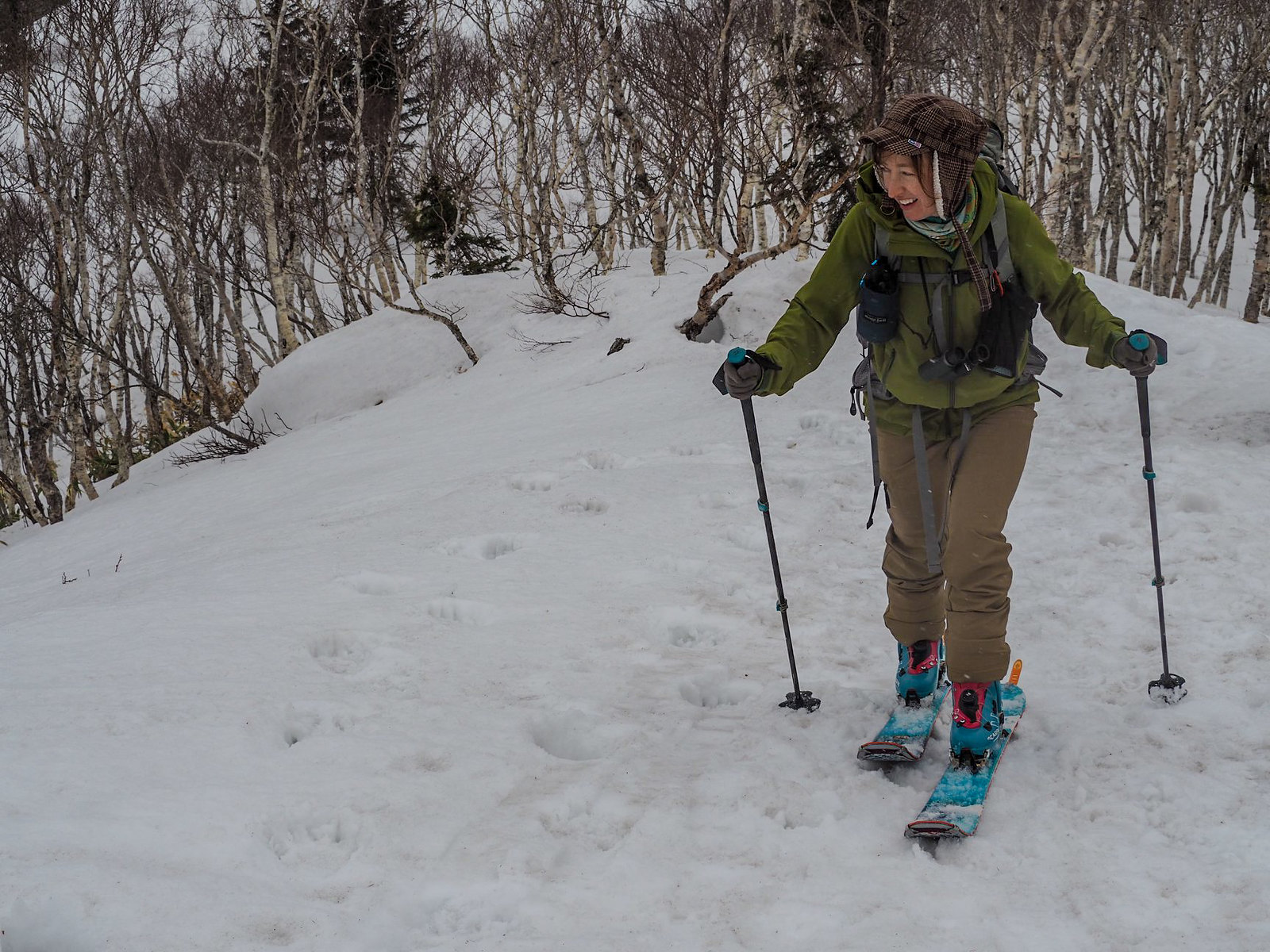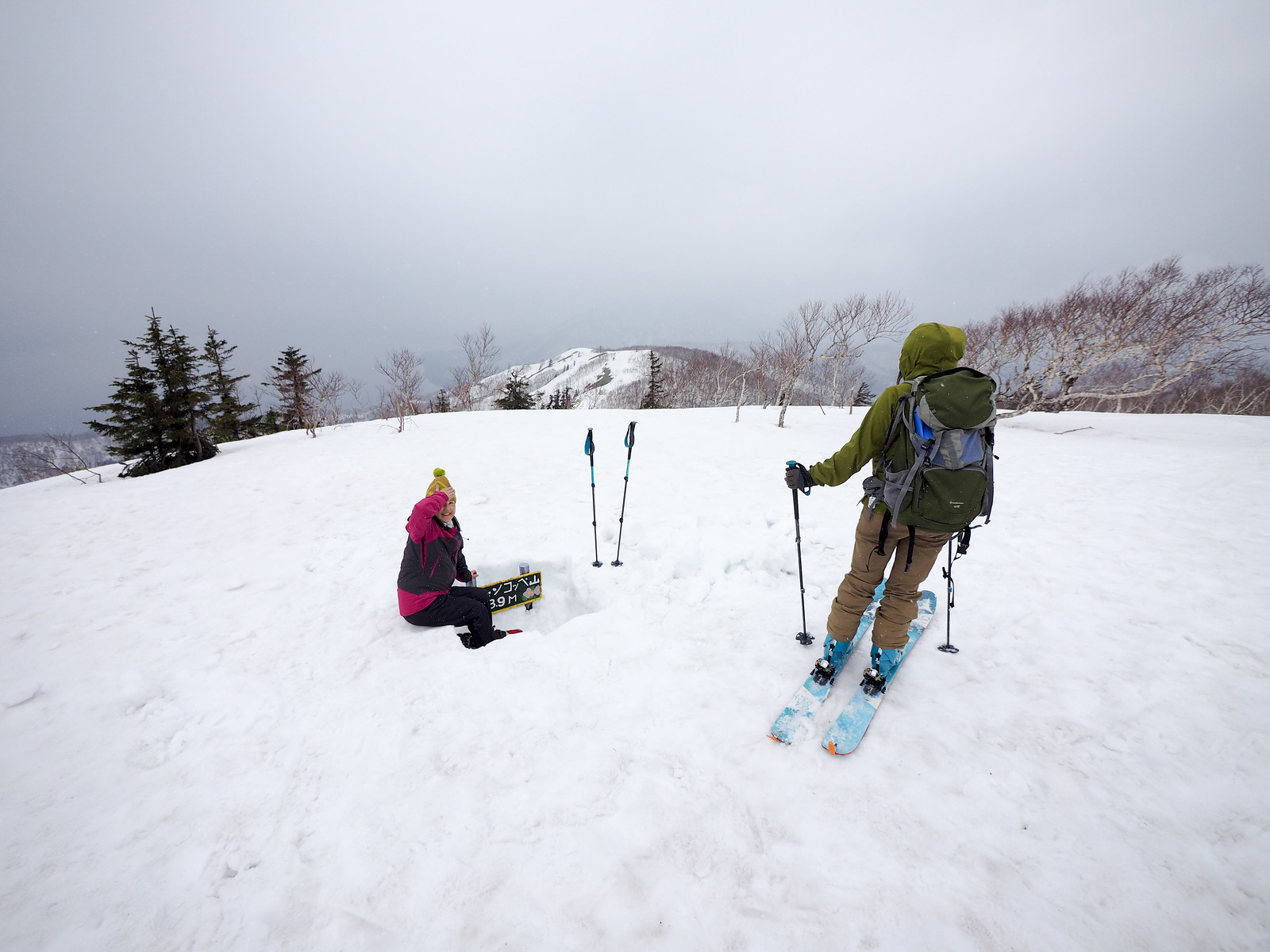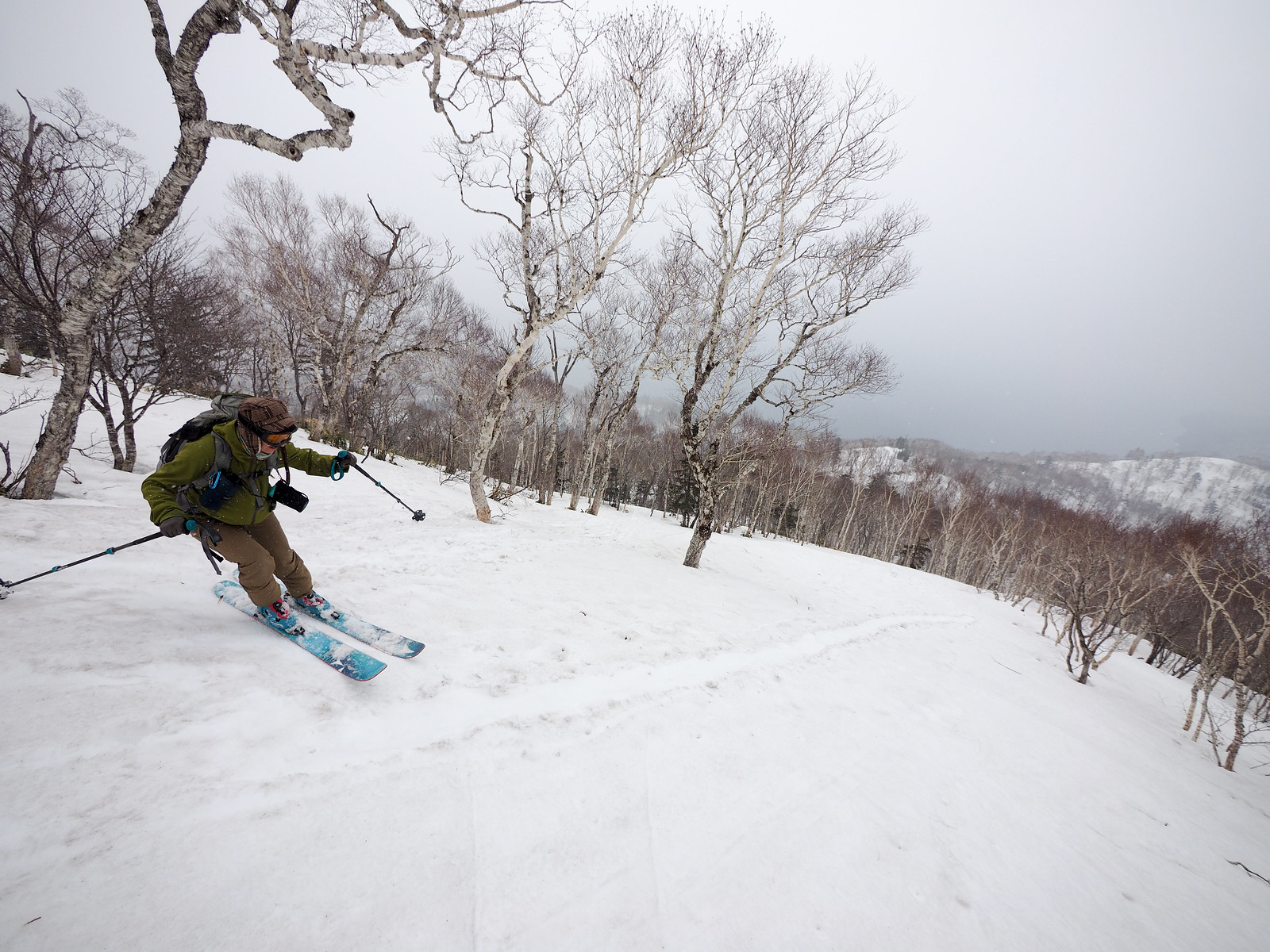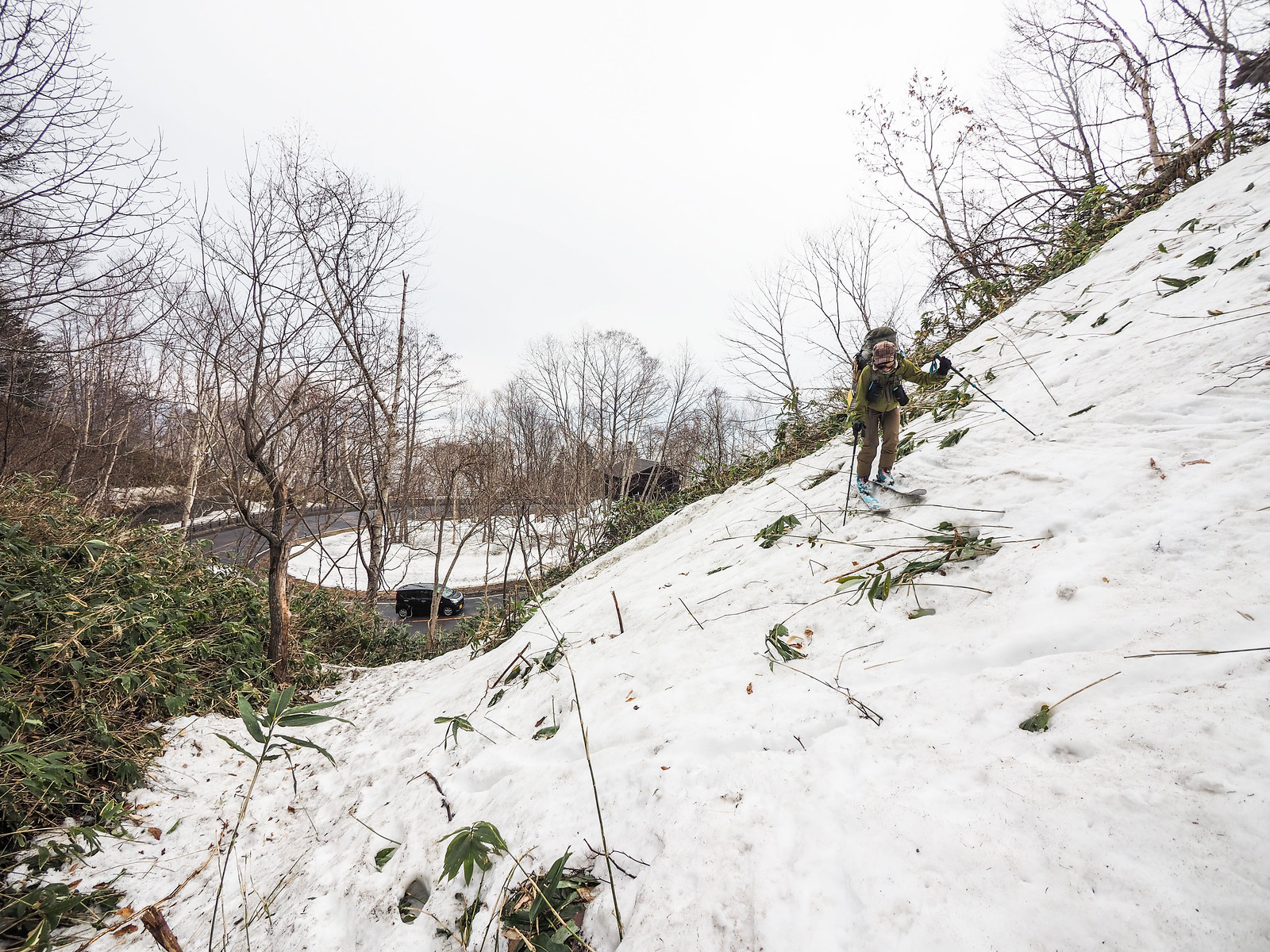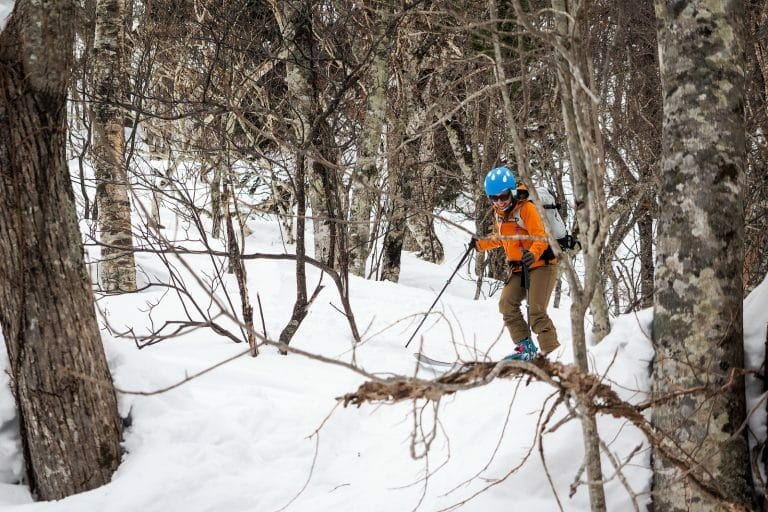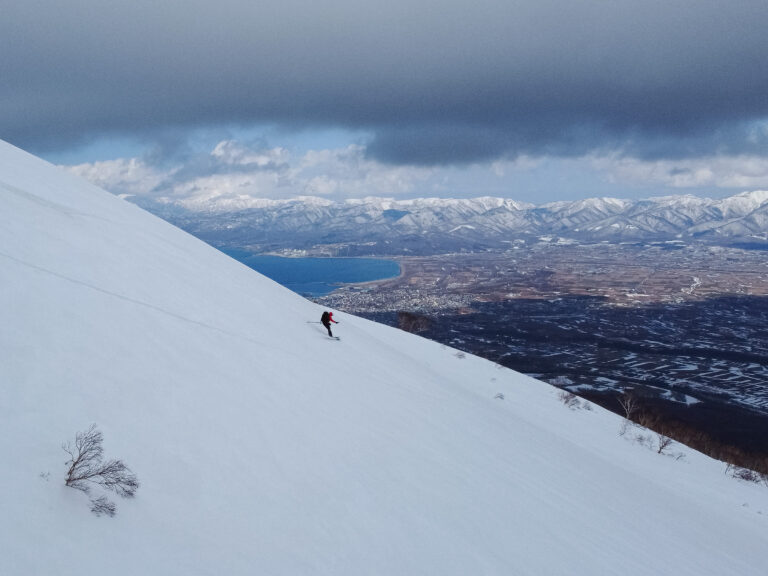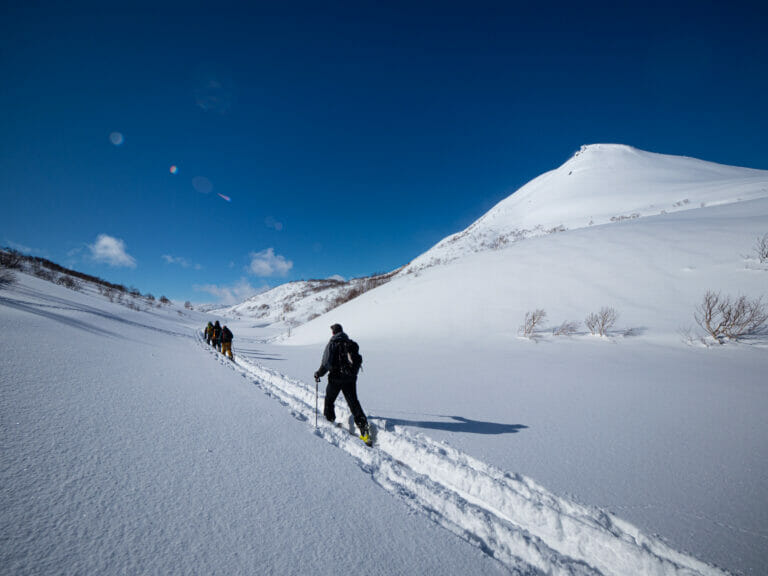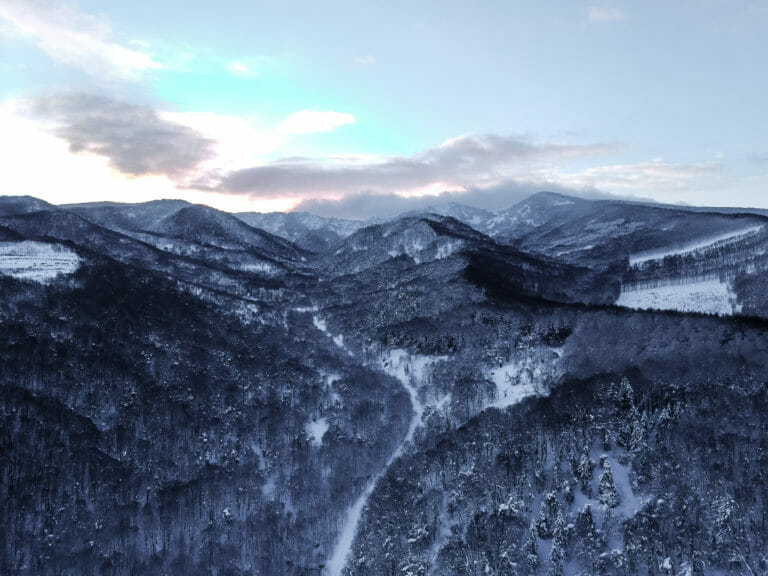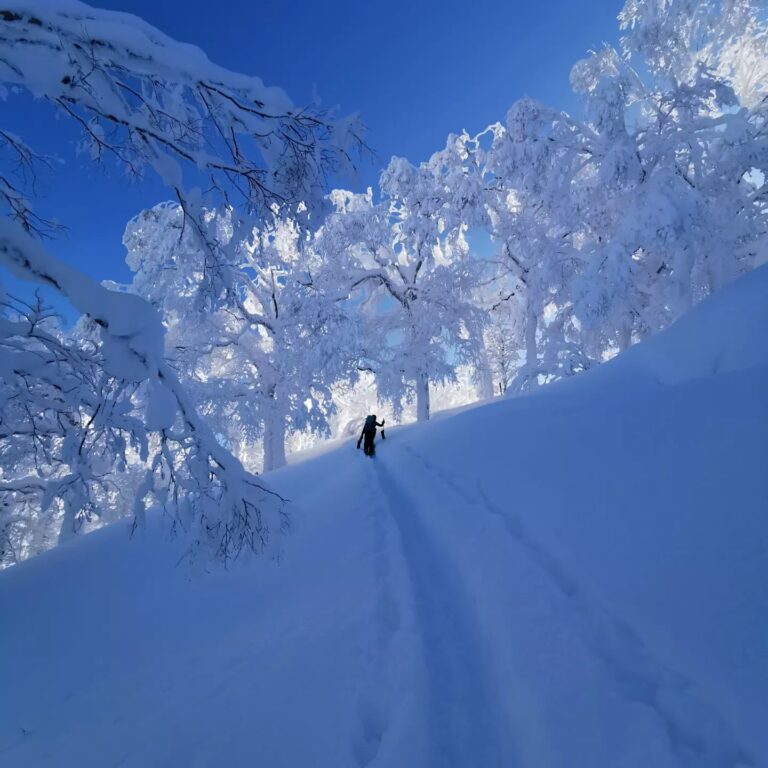I’d been obsessed with Ichankoppe’s lake-facing ridge for at least a couple of years. It looked like the perfect place for a winter camp, allowing hopelessly massive views of Lake Shikotsu from one’s tent door. Weather over mid-winter never seemed to cooperate, but at last in early spring, I found a weekend with a decent forecast. Some keen companions and I dragged ourselves – and two Swedish Torches – up for a night on the hill.
I’d never been up to Mt. Ichankoppe in winter before, but the approach looked straight forward enough. So we made it a leisurely start from the trailhead, finally getting away from the lookout carpark by about 11am. Our group consisted of two skiers and two on snowshoes.
It felt like proper spring weather, and we were all in single layers.
The lack of snow right at the trailhead was a concern for us skiers. This meant that the gorge to the west of the summer trailhead looked much more inviting, so the group split up. The snowshoers up the summer trail, and us on skis up the gorge (marked on the map above as the return down-track.
I had decided that a nice contained campfire would be nice, and considering it would only be about 1 hour to our campsite, I had strapped two 5kg Swedish torches to my pack. I don’t think I’ve carried a pack as heavy as that before. Leg day every day.
Besides the lack of snow, the beginning of the trip was also punctuated by another unexpected turn – I slipped while trying to clamber up the roadside to the gorge, and got a relatively deep cut to my little finger. Had it not been for a well-stocked first-aid kit, the trip would have been over before it had started.
With that excitement contained, we were on our way.
The spring snow on the climber’s left of the gully was dense and slippy on the surface. This made the going slow for Haidee who’d just arrived back to Hokkaido the week before after spending a month in New Zealand – her legs had hardly had a chance to acclimatize back to ski touring before being thrown in the deep end.
We made slow but steady progress, however, and only made Saoka and Gerry (the two on snowshoes) wait in the cold at the ridge for 30 minutes (sorry guys!).
By the time we did arrive at the long ridge connecting Mt. Horohira and Mt. Ichankoppe, some high clouds had formed. Visibility was still excellent though, allowing grand views across the lake to Mt. Tarumae and Mt. Fuppushi.
By this time we’d taken about 2 hours just to get to this point, and the day was getting on. We pushed on.
Looking at the topographical map (PDF here), I had my sights on a spot somewhere around 785m (here) for a campspot. When Saoka had hiked Mt. Ichankoppe in the summer, she had also thought that would be a nice spot to camp. When we arrived at the clearing at around 620m, however, I recommended we stop and camp there. The time was getting on, and the clearing was nicely sheltered from a brisk northwesterly that was blowing. Best of all, the outlook was amazing.
After some snacks and warm drinks from our thermoses, we got into setting up the tent and an outdoor living area. First up was the 4-person pyramid tent (the Hyperlite Ultamid 4). I pitched it higher than normal this time, and we used snow blocks to create a 20cm high wall around the base to give a little more room on the inside.
Gerry and Saoka had not realised they’d be sleeping in a tent with no floor.
Next was the outdoor living area construction. A wall to block the northwester breeze, and a heat-reflector wall for the Swedish torch. With a weather forecast of light snow, maybe rain, the next morning, I had also brought our Montbell Minitarp HX.
It was now just before 6pm, and time for some dinner. I had bought the Swedish torches from the Shugakuso Outdoor store in Sapporo City (the Shiroishi Store) for 1,500yen a piece. I like Swedish torches for snow camping, because they 1) allow for easy cleanup (in keeping with the leave-no-trace principles) and 2) the fire doesn’t sink so much down into the snow (as is the case with a normal campfire lit on the snow surface). With our large wall blocking the wind from the northwest they burned well enough (not quite as well as the big one from Ashoro Town last week), but we struggled with wind eddies that meant that our little outdoor area essentially filled with smoke.
Our alfresco dining experience was a decidedly smokey one.
That night was the first time we’d had four people in the new four-person pyramid tent. With the height raised, it was a palace for four people. So often when a tent is advertised as large enough for X-number of people, it’ll fit that number if you’re all jammed in like sardines. And forget it if you want to put packs and other gear in the tent with you. This tent, however, as we had it set up in the snow, would have fit six people jammed in like sardines. With the four of us in there, we could have easily fit in our packs also.
On this occasion, however, other hikers had told us they’d seen fresh bear prints in the snow further up the ridge, so we kept our packs outside under a tree about 5om away.
I slept like a log that night, with the others reporting various degrees of wake-sleep-wake cycles. It certainly wasn’t a cold night – all the water in our water bottles was still liquid in the morning.
Contrary to the weather forecast the day before, we woke to still-clear views of the lake and surrounding mountains.
We packed up most of our stuff and left it in the tent, leaving the campsite for the summit of Mt. Ichankoppe around 9:30am. The route was a pleasant one, up and along the ridge to the summit.
It appeared the weather that had been forecast for earlier in the morning was simply a little bit late, and by the time we got to the main summit ridge, we’d lost sight of much of the lake. A very light snow was now falling. Far in the distance we could see our campsite further down the ridge.
Part way up, we discovered the bear prints we’d been told about the previous day. They extended at least 50m alongside the snowshoe tracks along the ridge. Most Japanese hikers we met expressed surprise at the bears being awake so early.
At the summit, some kind soul had searched for and dug out the official Mt. Ichankoppe summit sign. I would later read on the Japanese Hokkaido mountaineering Facebook page that it had taken them an hour to find it under the snow.
The downhill from the summit, despite the couple of ups and downs, was good, spring skiing fun. Back at the campsite we packed up the tent and cleaned up as much as we could, and headed back down to the car. Gerry and Saoka on snowshoes followed the summer trail, and Haidee and I on skis took the gully route on the western side of the summer trail ridge.
When the other two arrived back at the car, we went straight to Marukoma Onsen further down the road (location), and were happy to have a good relaxing soak after a great weekend out in the hills.


